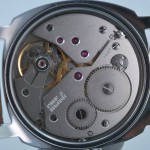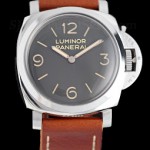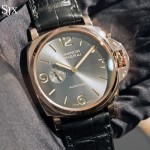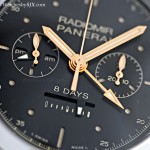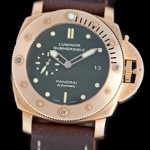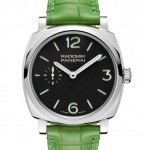Explaining The Panerai P.9000 Automatic Movement – We Take It Apart And Put It All Back Together
As part of a Panerai watchmaking class, we took apart and then successfully reassembled the Panerai P.9000 automatic movement. The experience was revealing - both in terms of the skill required by a true watchmaker, but also in the details and construction of the calibre P.9000.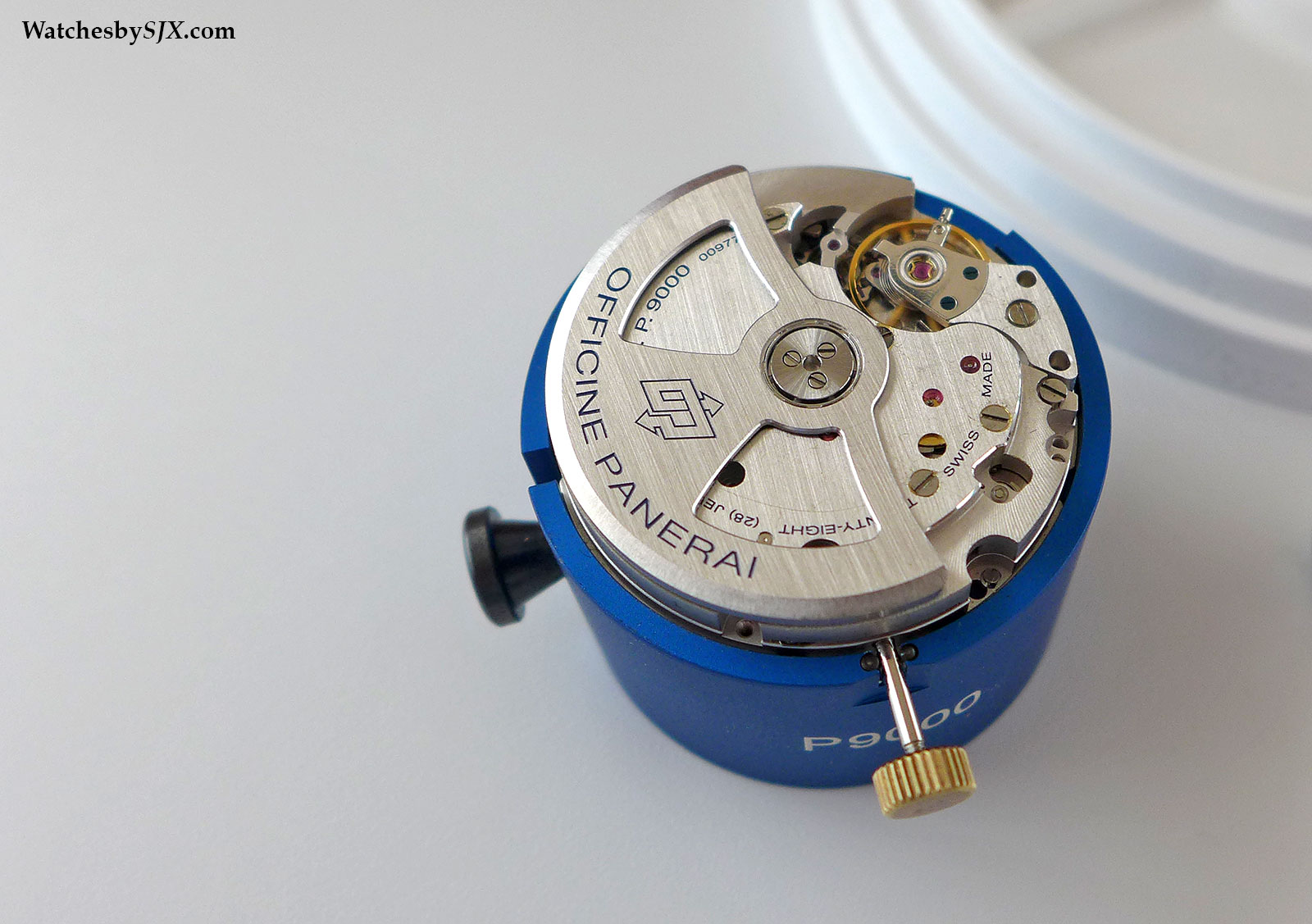
The calibre P.9000 is the Panerai‘s workhorse movement – self-winding with twin barrels and a three day power reserve. It serves as the base for several other complications, including a GMT and chronograph. Variants of the base calibre including the P.90001 to 9003, as well as the P.9100 chronograph. At 13 3/4 lignes wide and 7.9 mm high, it is a large and thick movement, with similar dimensions to the Valjoux 7750 chronograph calibre. In fact, it is intended as a replacement for the 7750-based OP III that was once the movement inside most automatic Panerai watches.
Now the P.9000 is found in many of the brand’s entry level, in-house models like the PAM388, PAM392 and PAM359, the P.9000 also powers most of the Submersible models, including the PAM389, PAM508, PAM389 and PAM569. Notably the P.9000 has several features that are also found in movements from other brands from within the Richemont Group, which also has in its stable Cartier, Montblanc, IWC and Jaeger-LeCoultre, most notably the Magic Lever winding mechanism. A working, but well worn (the movement had gone through three days of watchmaking classes), P.9000 movement was provided for the watchmaking class. The session focused on three key components of the movement: winding mechanism, gear train, and escapement. As with many things, disassembling the P.9000 was quicker and easier than putting it together.
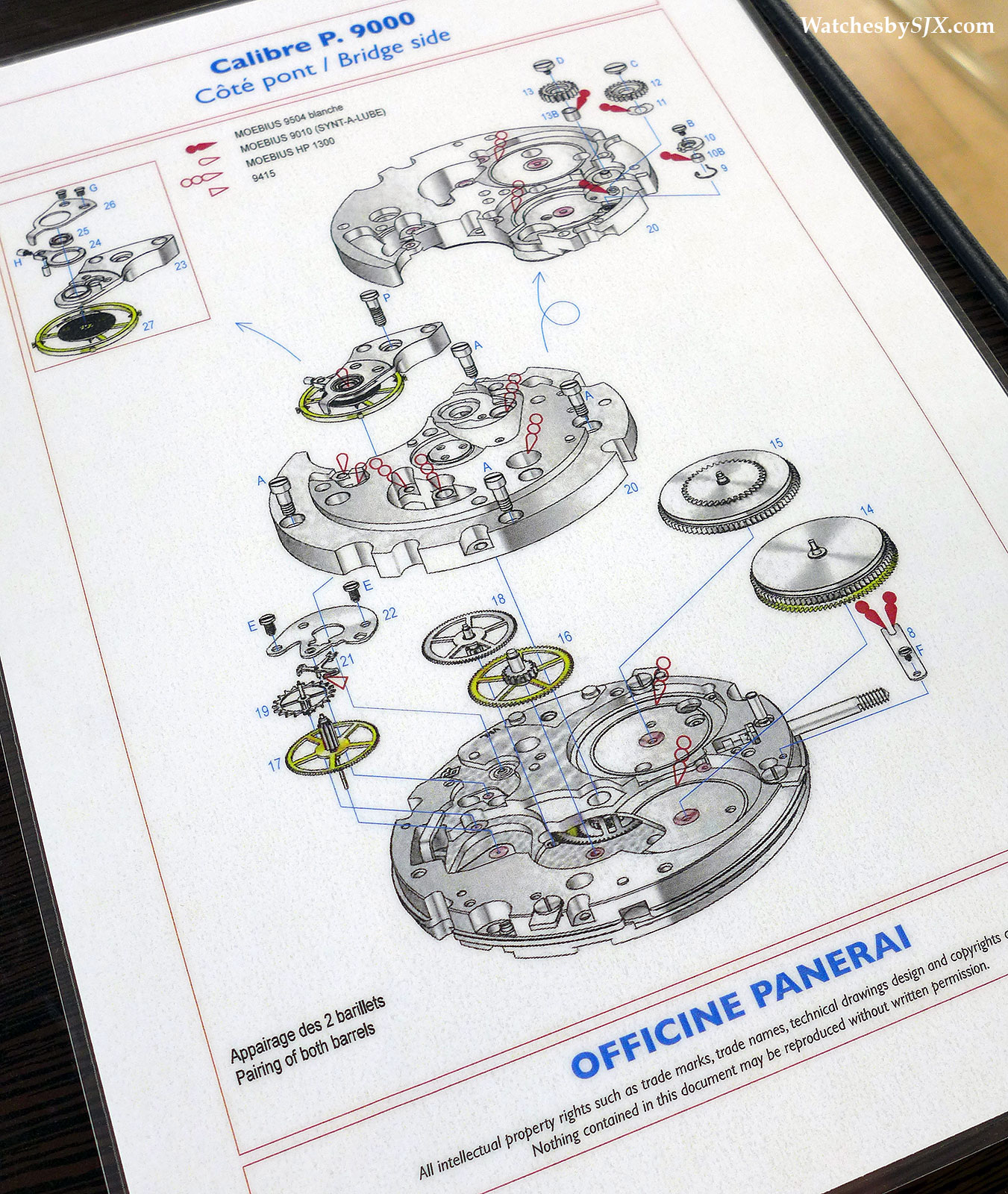 |
| A guide for assembly and lubrication of the P.9000 |
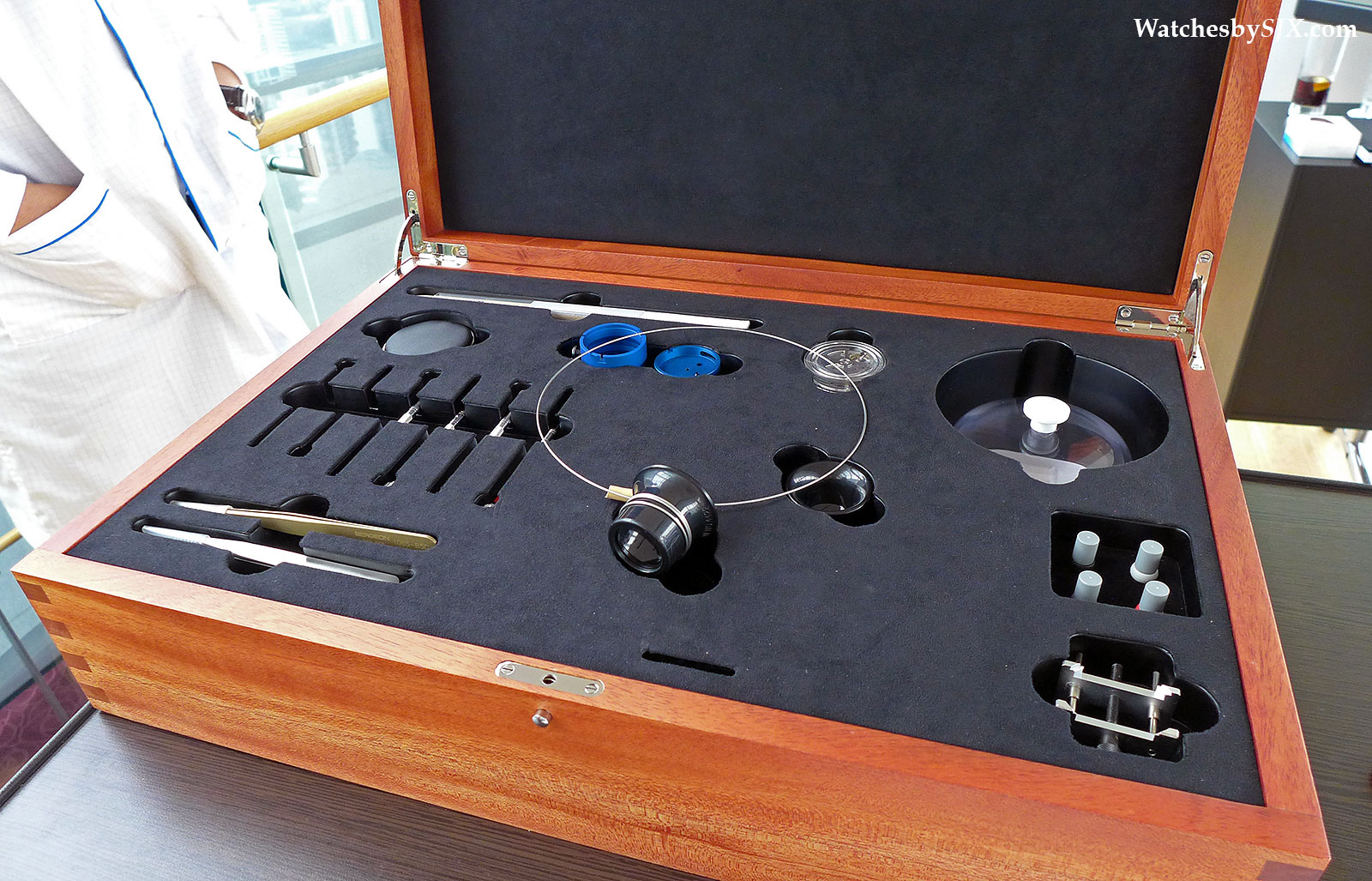
Automatic winding
The first step is easy: removing the rotor, which is mounted on ball bearings and held down by three screws. Driven by the motion of the wrist and free to oscillate in two directions, the rotor winds the mainsprings whichever direction it spins thanks to the bidirectional Magic Lever winding system.
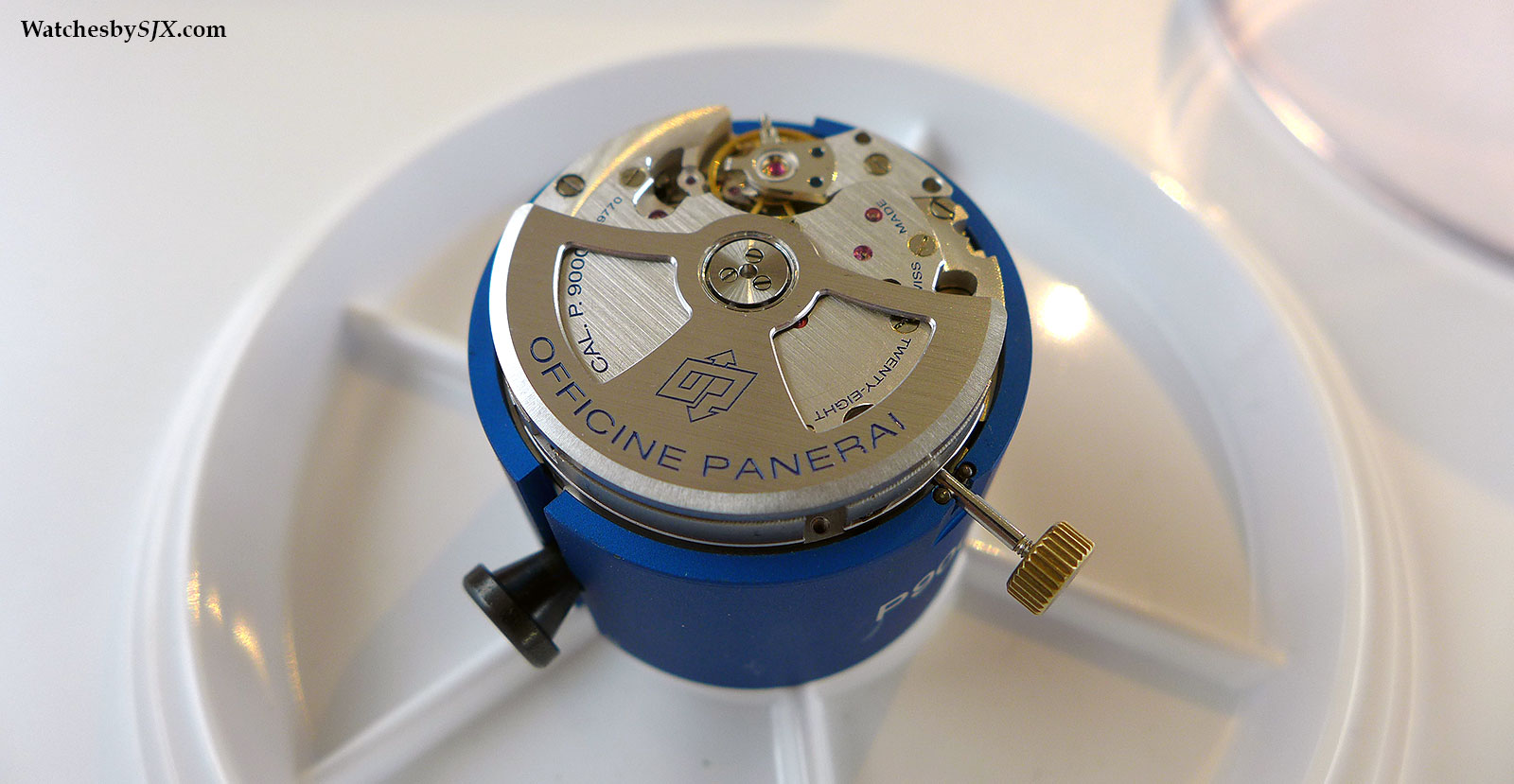
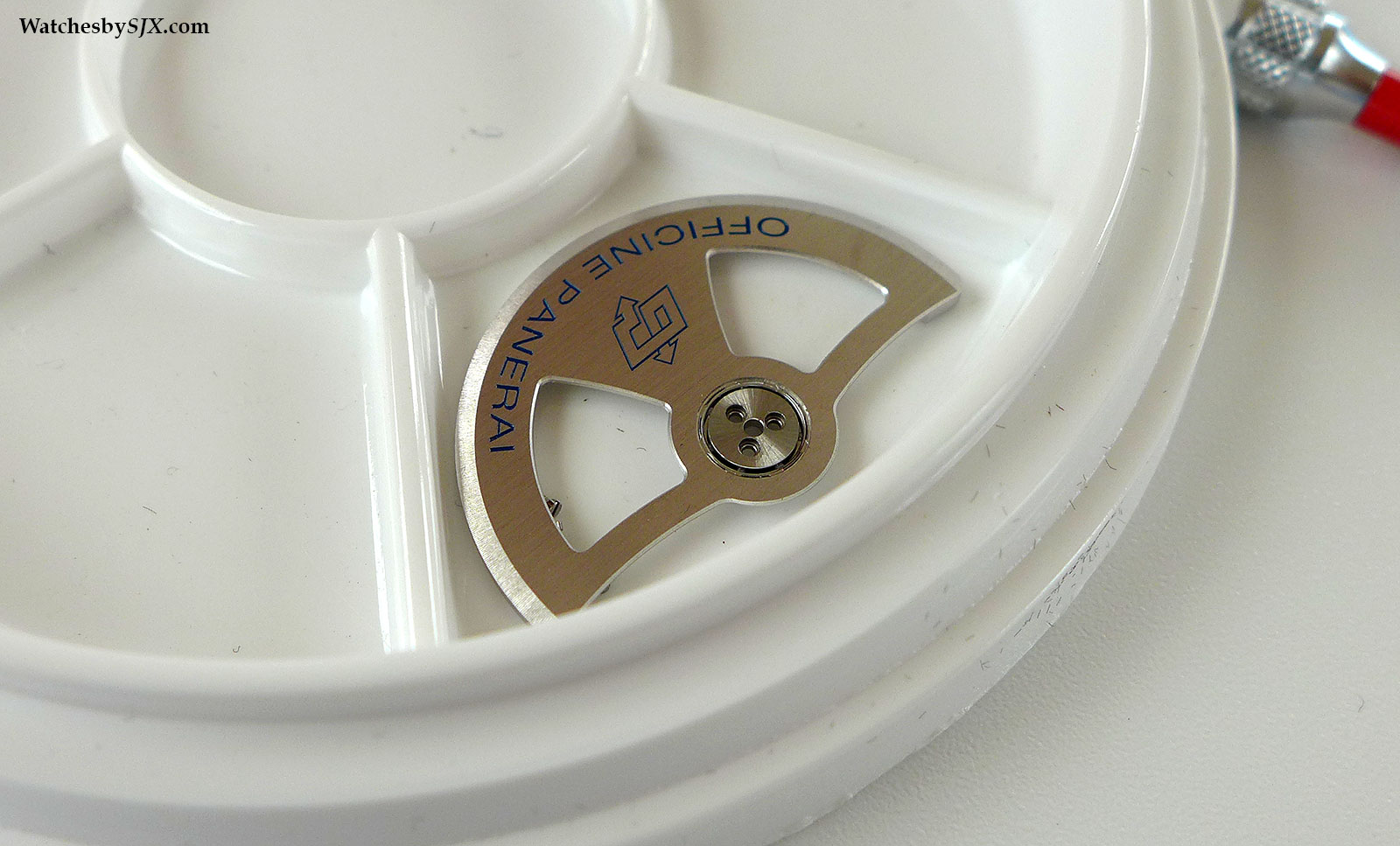
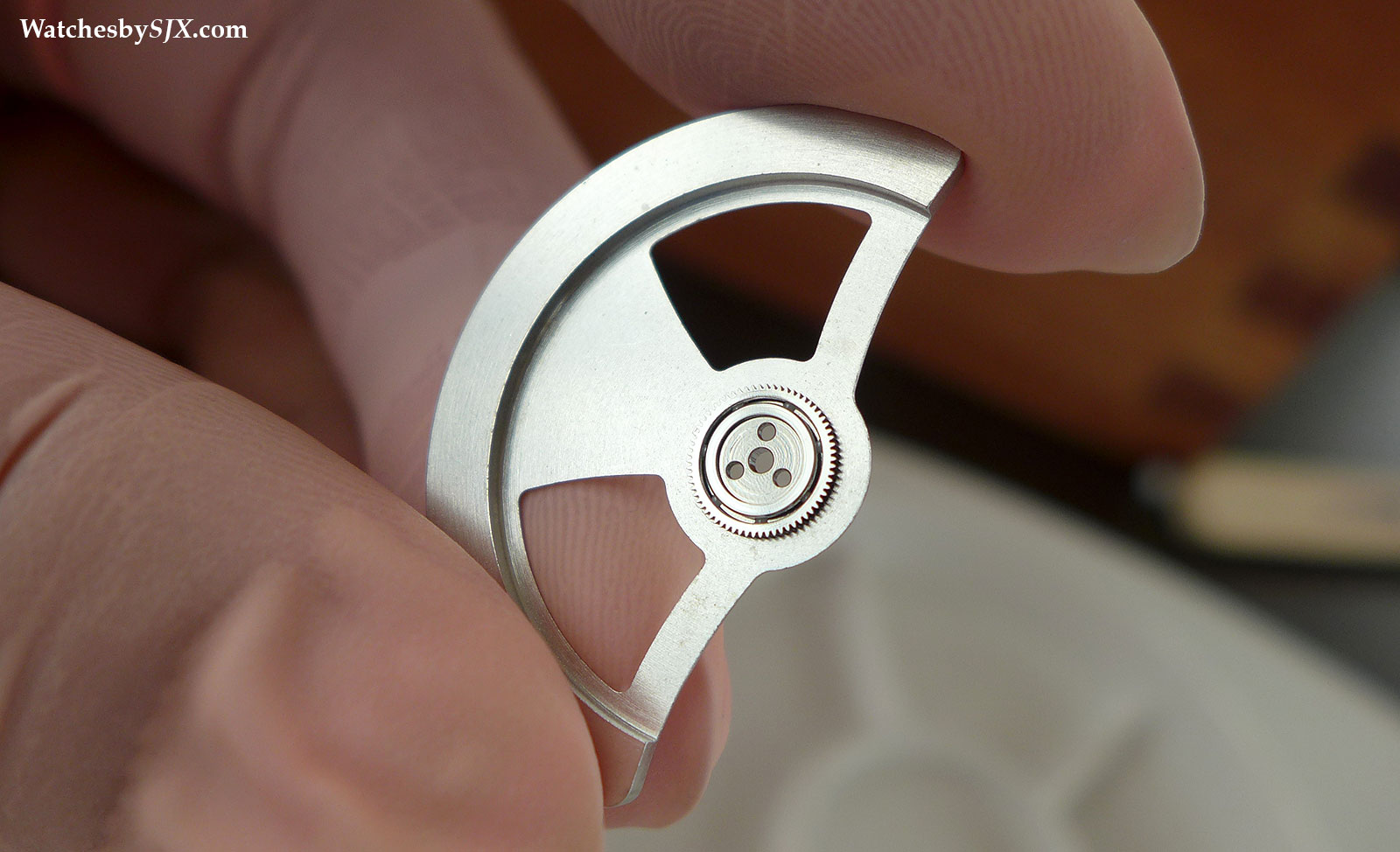
Balance assembly
Next is the balance assembly, comprising the hairspring, balance wheel and balance cock. The balance is the regulator of the movement, it gives the watch its tick and tock. As the balance wheel oscillates back and forth, it allows for a constant release of power by the mainspring, thus driving the hands.
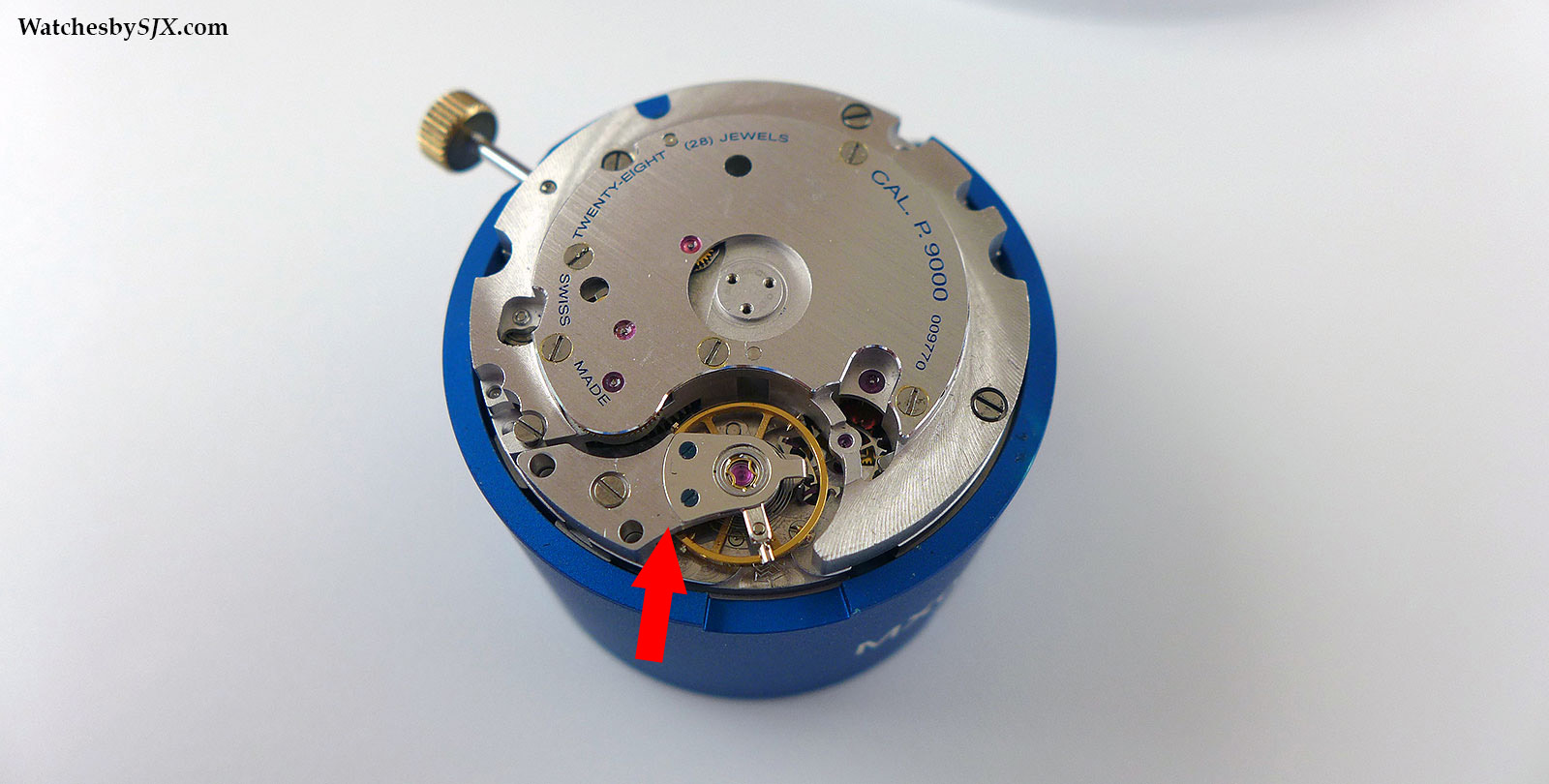
And the balance wheel is free-sprung with four weights on the rim of the balance wheel for weight adjustment. Moving these screws in and out changes the inertia of the balance.
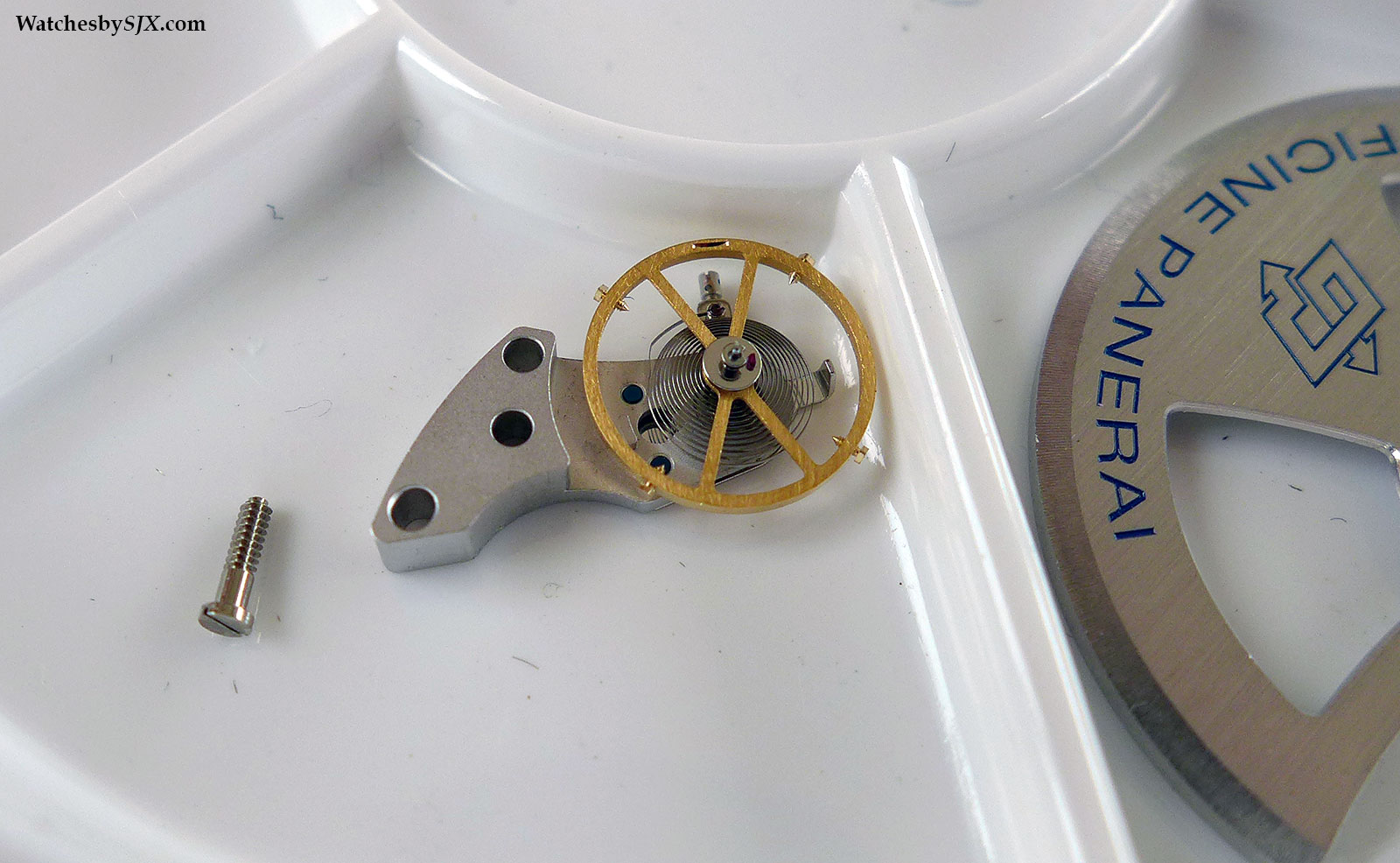
Note the shallow cut-out on the underside of the balance, milled out at the factory to poise the balance, to ensure it is equally weighted around its rim. This means a watchmaker is not likely to tweak it during servicing.
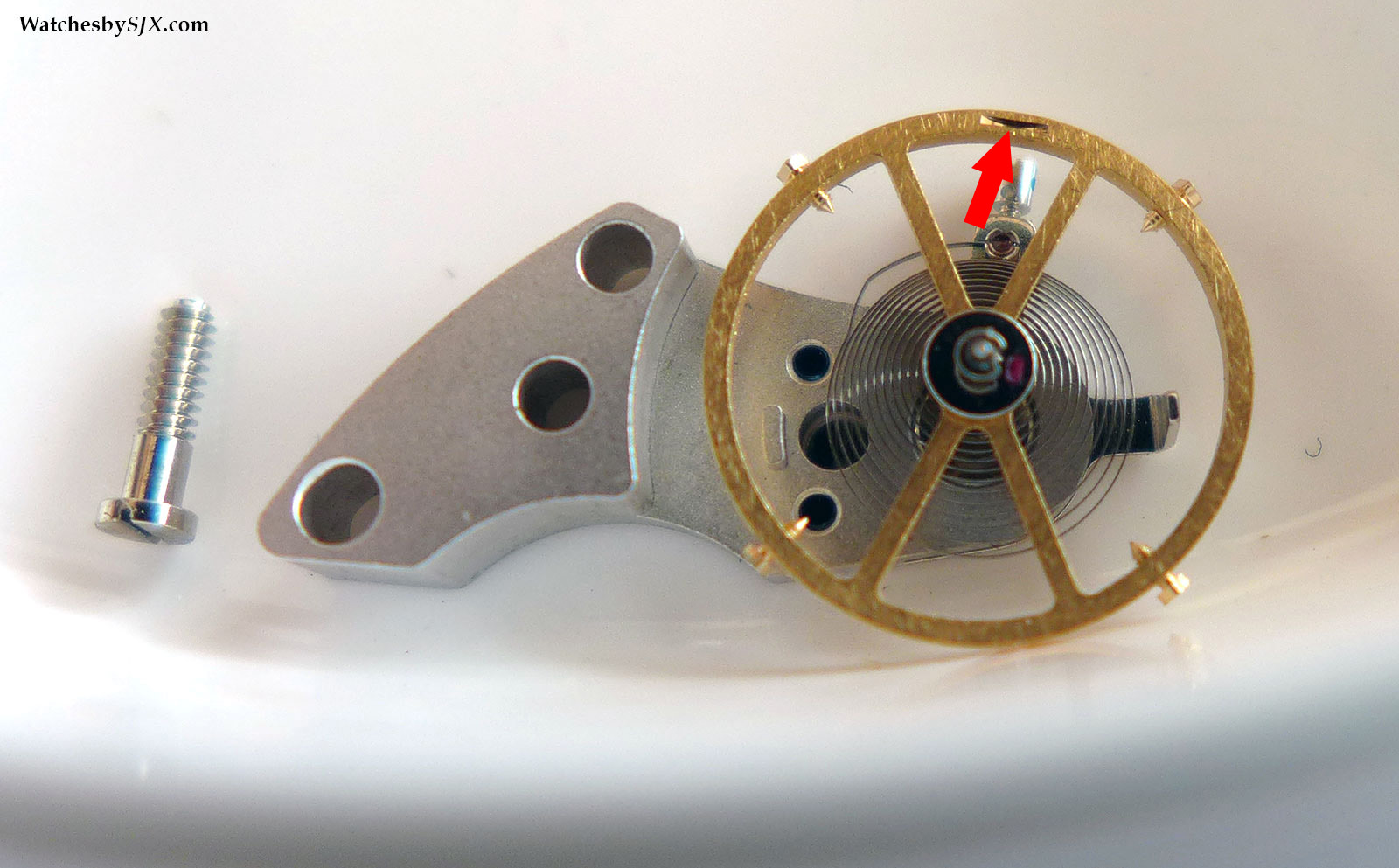
Because the balance assembly contains the smallest and most delicate parts of a movement, it was left intact.
Magic Lever winding
After that comes the winding mechanism, comprising a Magic Lever set-up underneath a bridge. This bridge forms the main visual feature of the movement, consequently it has the most decorative finishing, with a brushed surface and polished, bevelled edges.
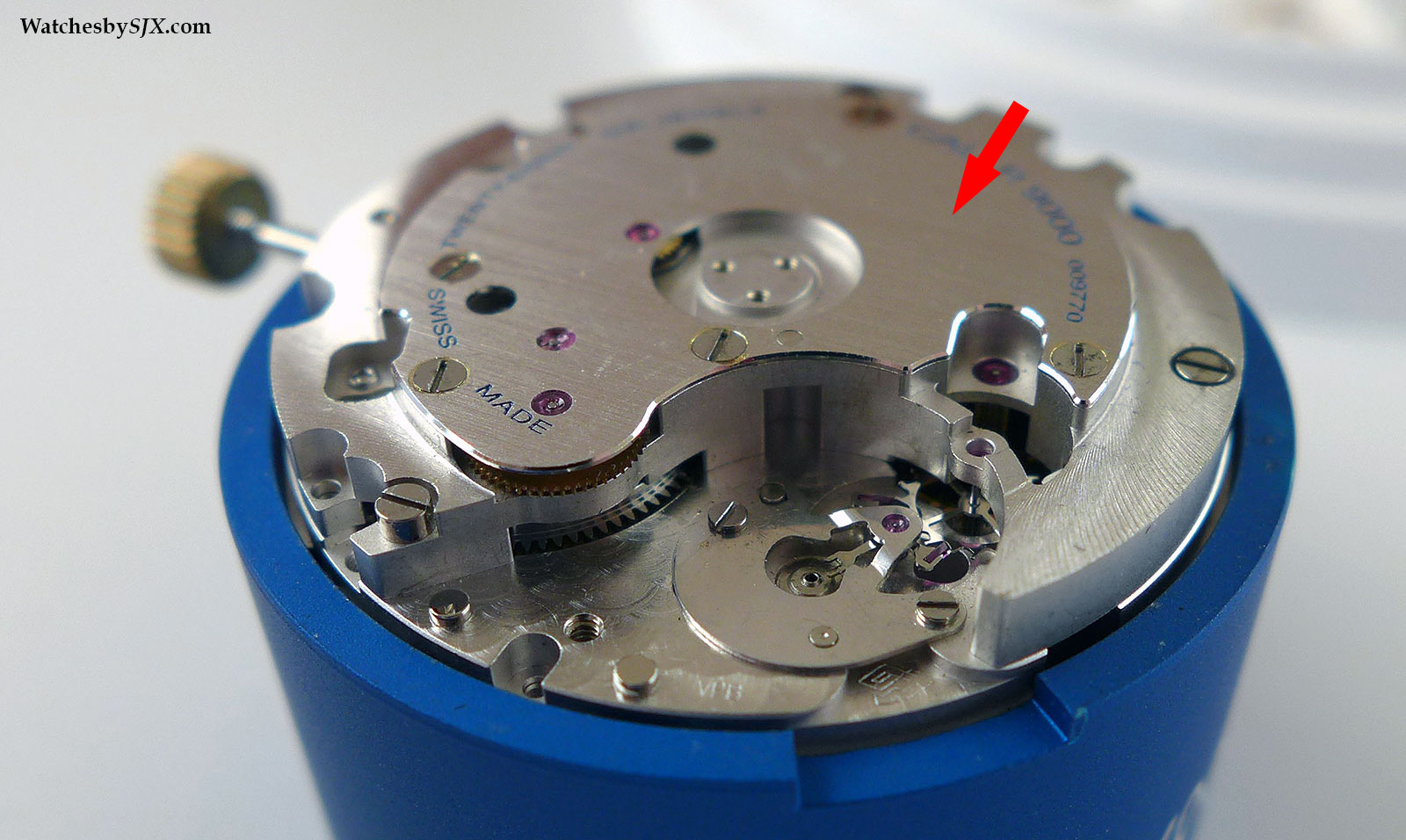
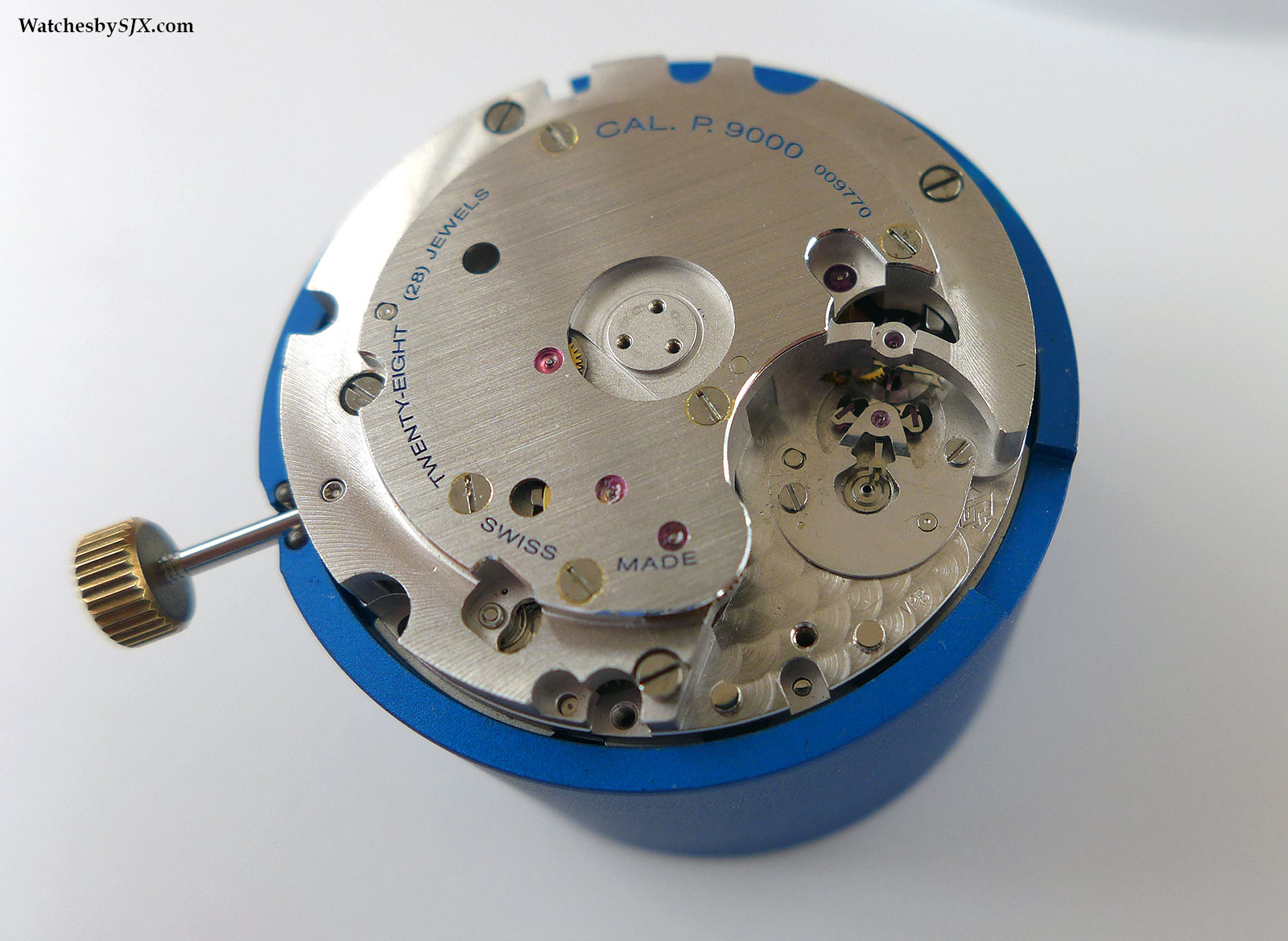
Favoured by the technical department at ValFleurier, the company that helps design movements for the various brands of the Richemont Group, the Magic Lever mechanism is also found in calibres from Montblanc, Cartier andn IWC.
It is distinguished by the V-shaped lever with teeth on each end that enables bidirectional winding. Invented by Seiko in 1959, the Magic Lever is a compact and simple winding mechanism with just four moving parts. The V-shaped lever is mounted on an eccentric centre (slightly off centre) so the teeth on each end will pull or push the pawl wheel.
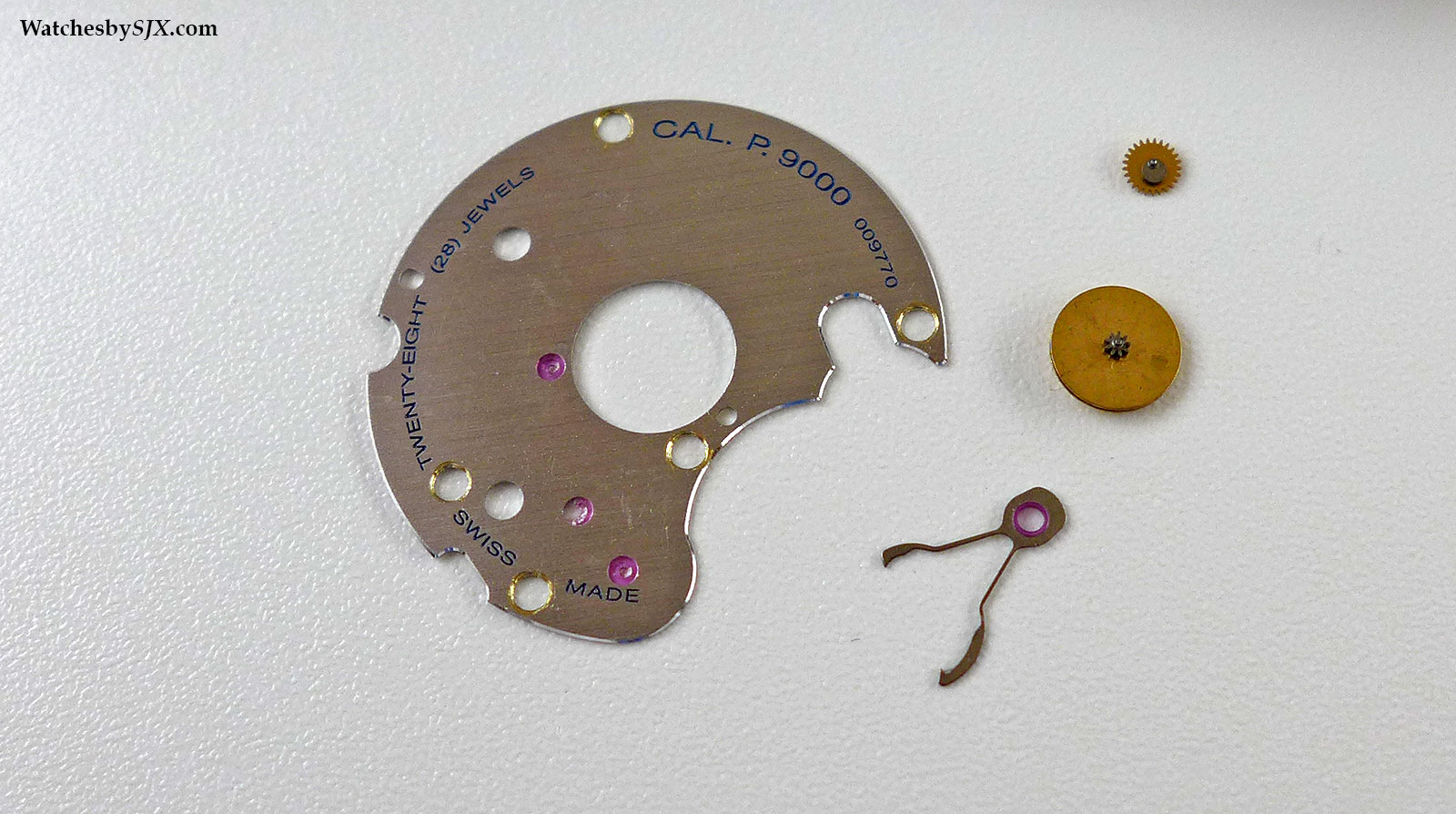
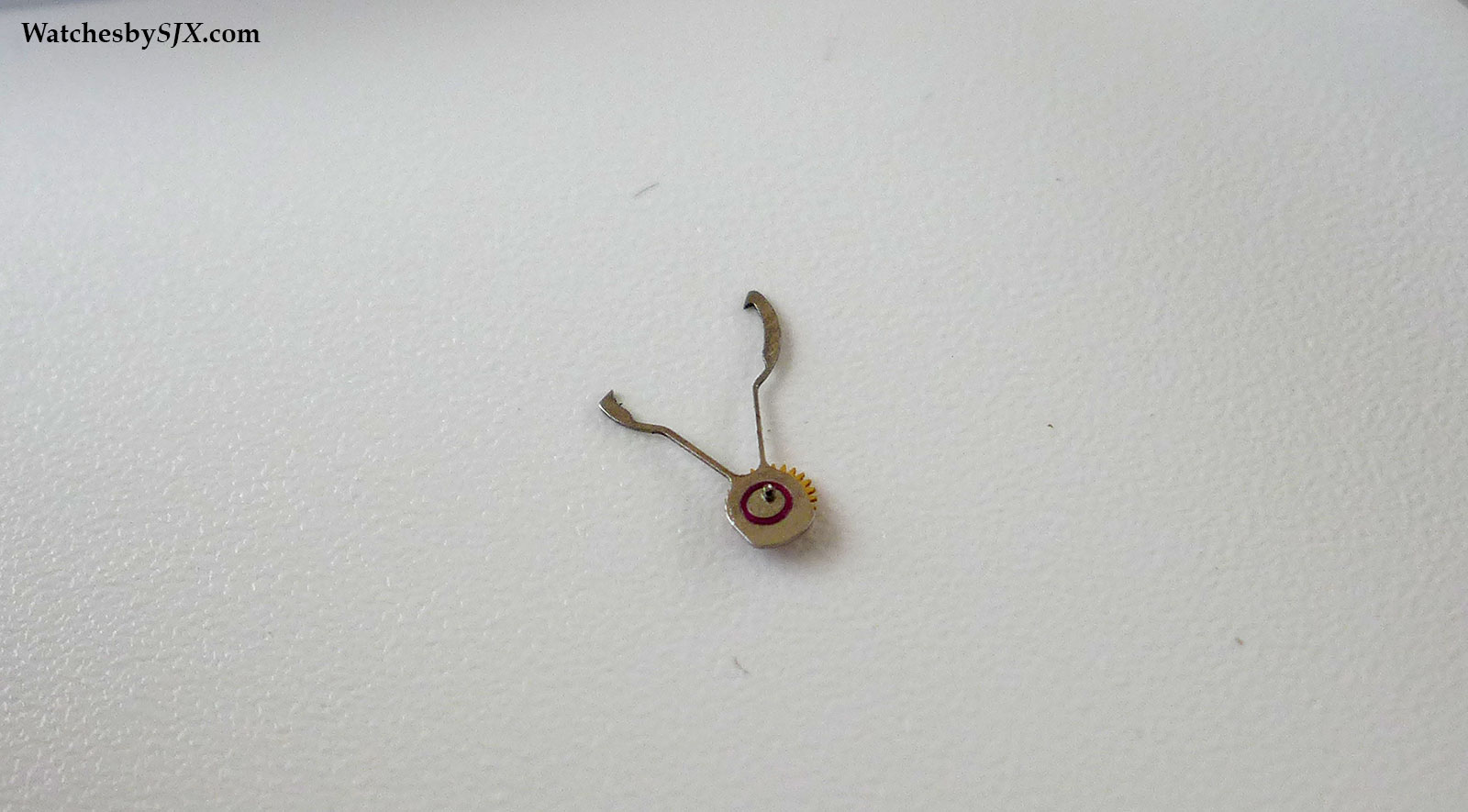
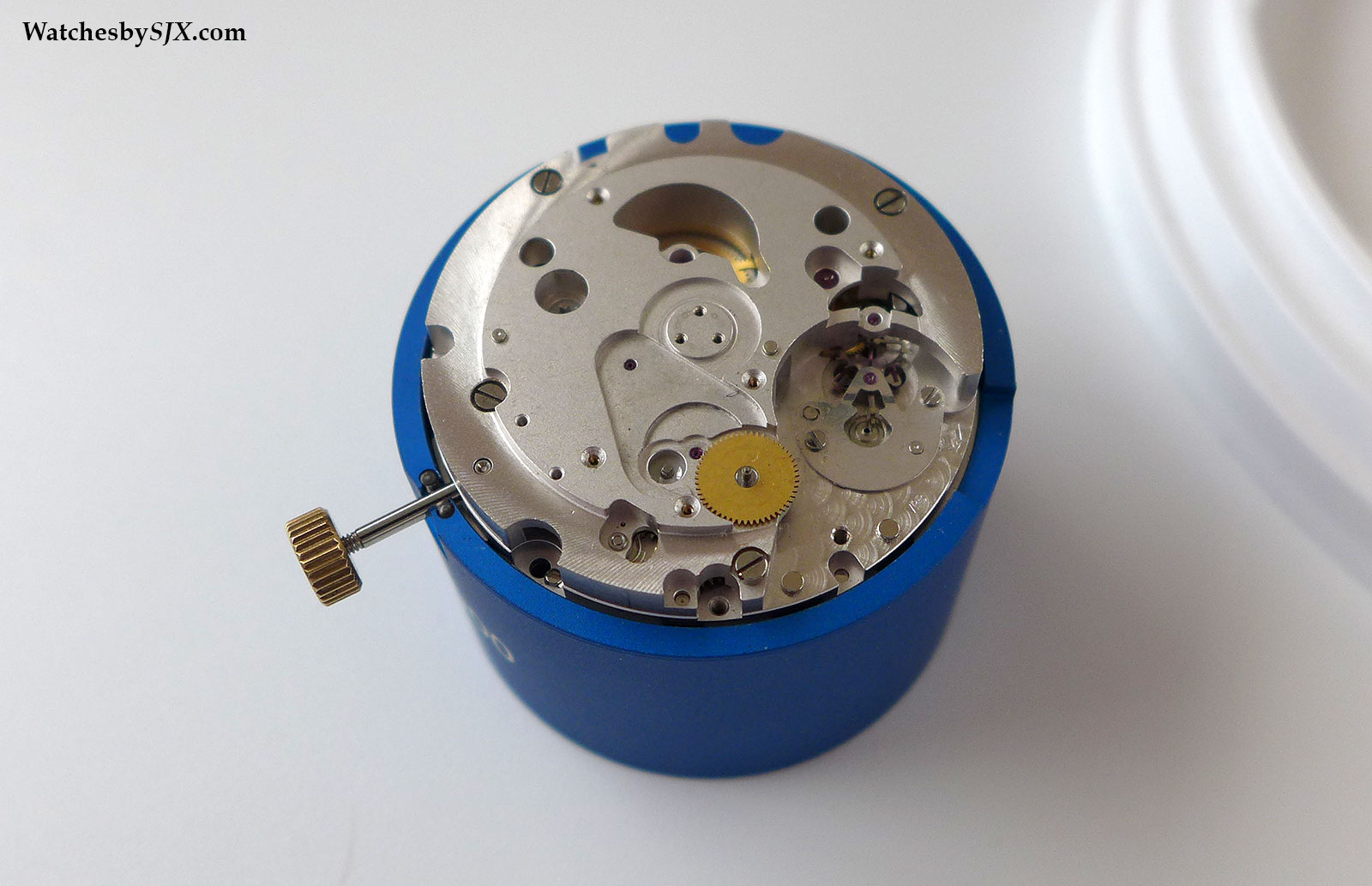
This animation from Seiko illustrates exactly how the Magic Lever works.
Pallet fork
The next step is removal of the pallet fork bridge and the pallet fork below it. Before this is done, however, the mainsprings have to be unwound by releasing the barrel click. This prevents the mainspring from unwinding rapidly, causing the pallet fork to spring out after its bridge is removed.
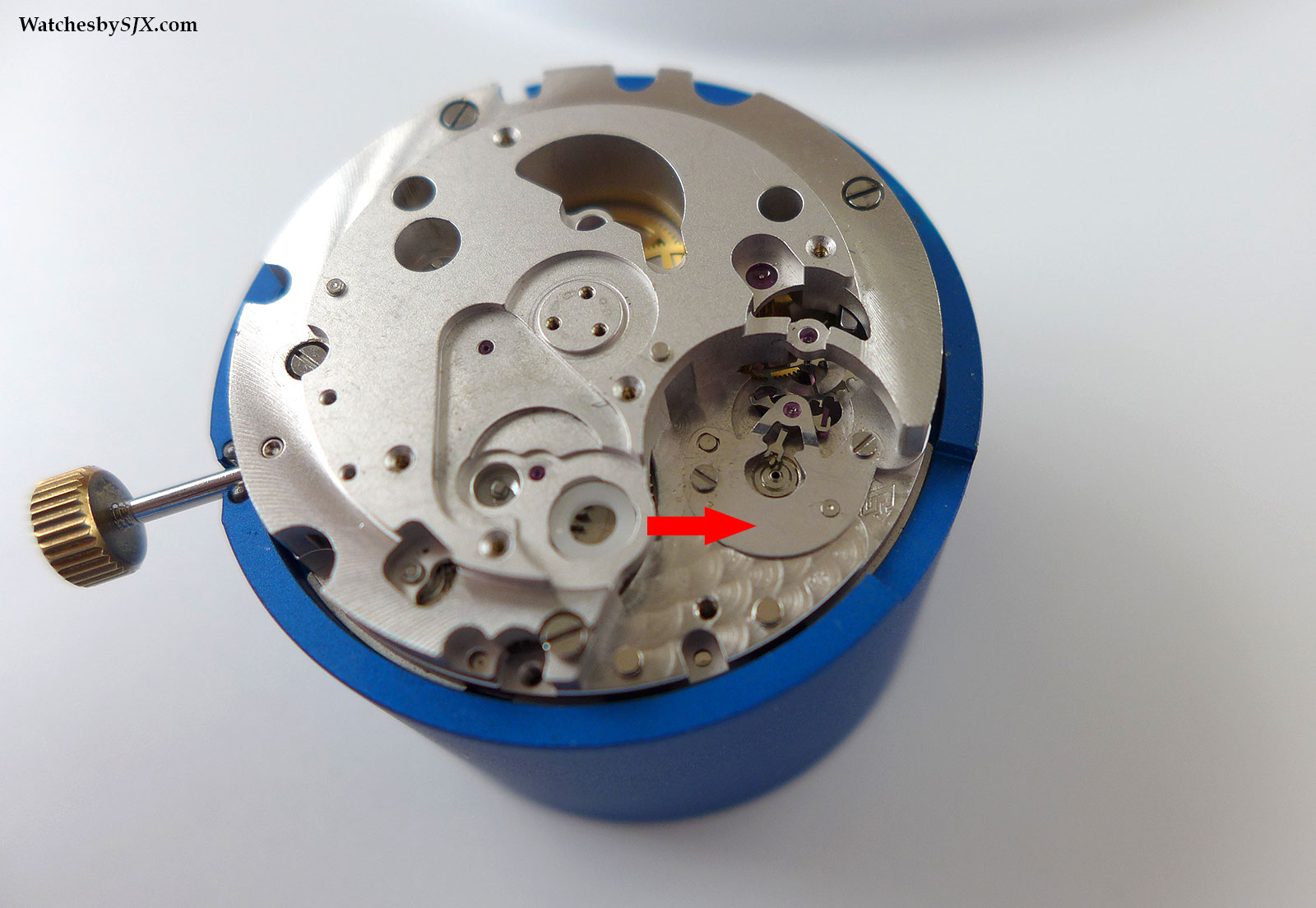
The pallet fork is a Y-shaped component that is one half of the escapement, the other being the escape wheel. The escapement works together with the balance, sitting in between the balance and the gear train. As the balance swings back and forth, the escape wheel locks and unlocks, each time allowing the gear train to move forward by a fixed amount.
Three-quarter plate
After the escapement, it’s the turn of the three-quarter plate.
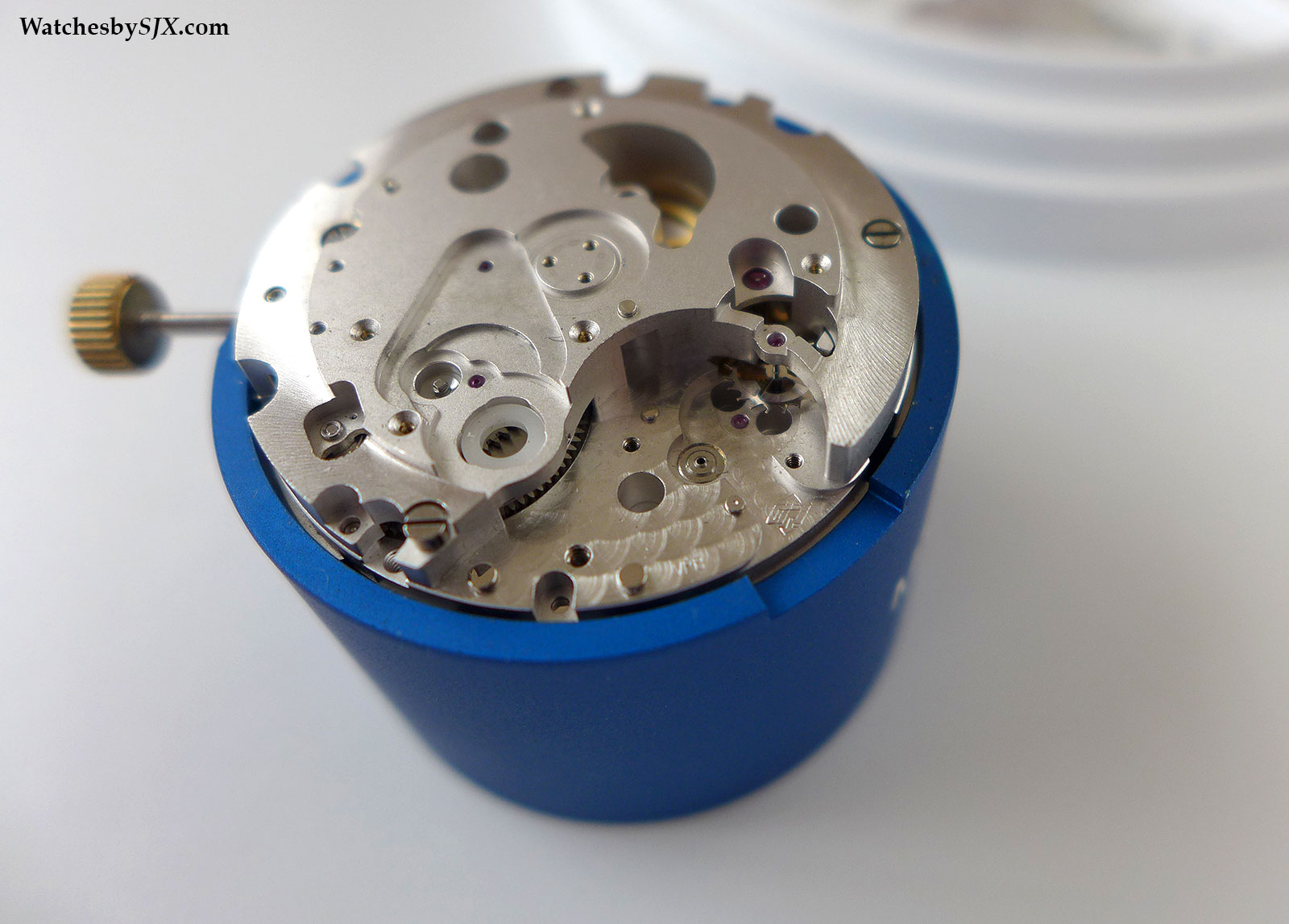
The three-quarter plate has three bushings made of a hard plastic like Nylon, Delrin or similar, for each of the twin barrels and the winding wheel. These are durable, being less fragile than jewelled bearings, need no lubrication, as well as being cheap and easy to replace. Jewelled bearings are prone to cracking with careless handling, and this movement had several damaged jewels after undergoing a few watchmaking classes.
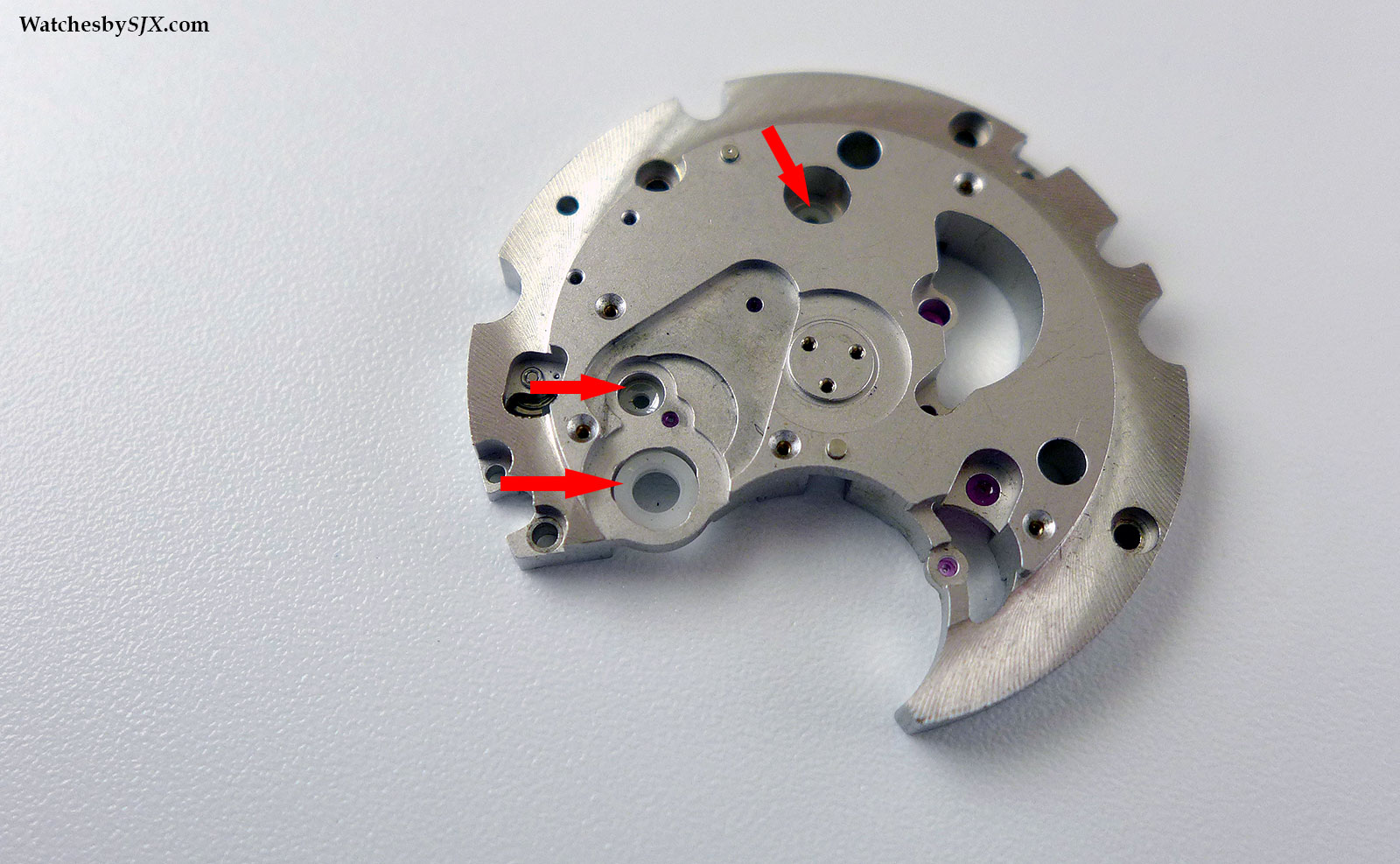
The underside of the three-quarter plate has two gears for winding, as well as the click for the barrel. That stops the barrel from unwinding and is responsible for the clicking sensation when winding the watch manually.
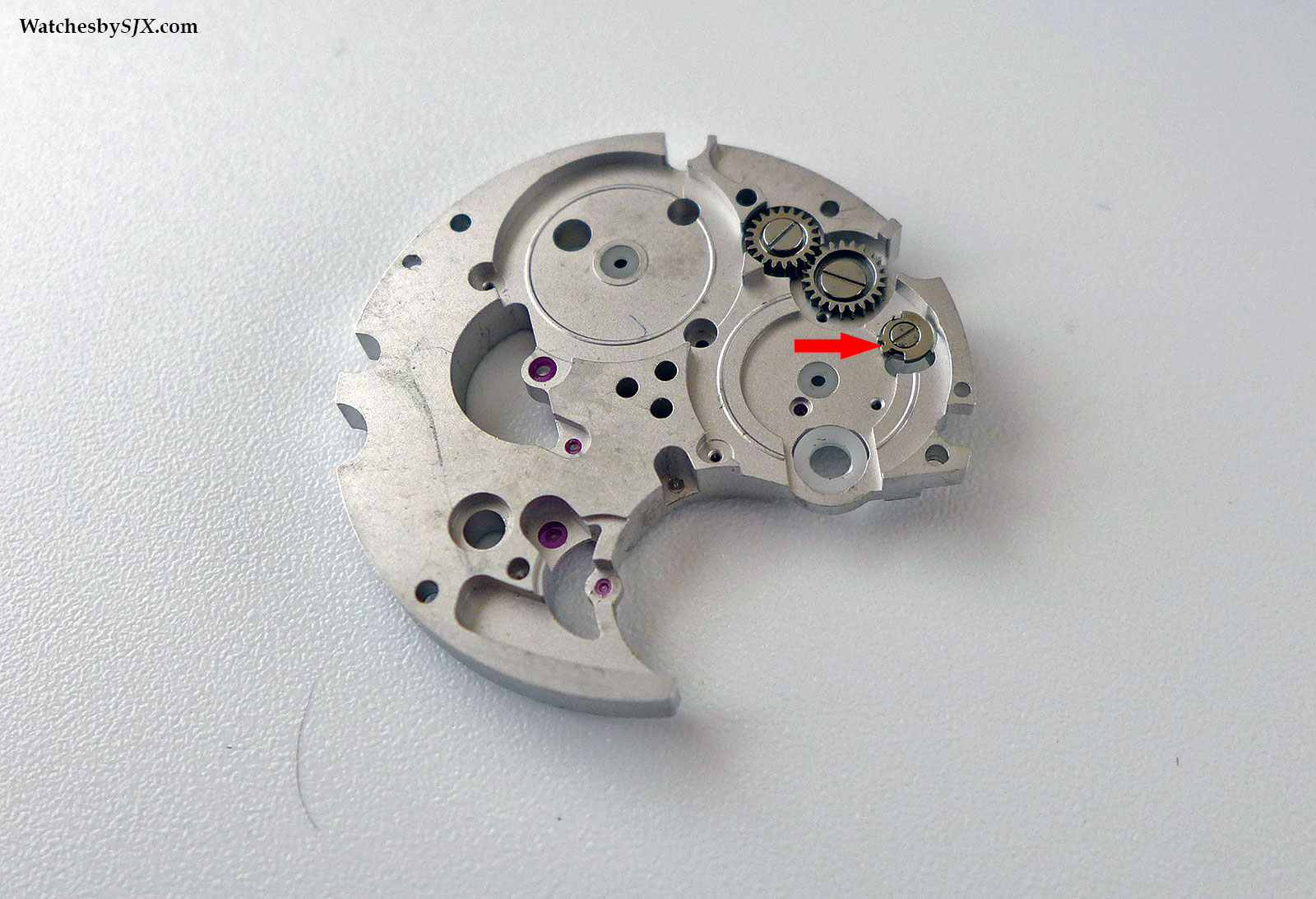
Gear train
With the three-quarter plate removed the gear train and twin barrels (red arrows) are revealed. The gear train transmits power from the barrels to the balance and the hands. It is comprised of the centre wheel (green arrow), third wheel (yellow), fourth wheel (blue) and escape wheel (white). The shaft of fourth wheel extends all the way to the dial as it drives the seconds hand.
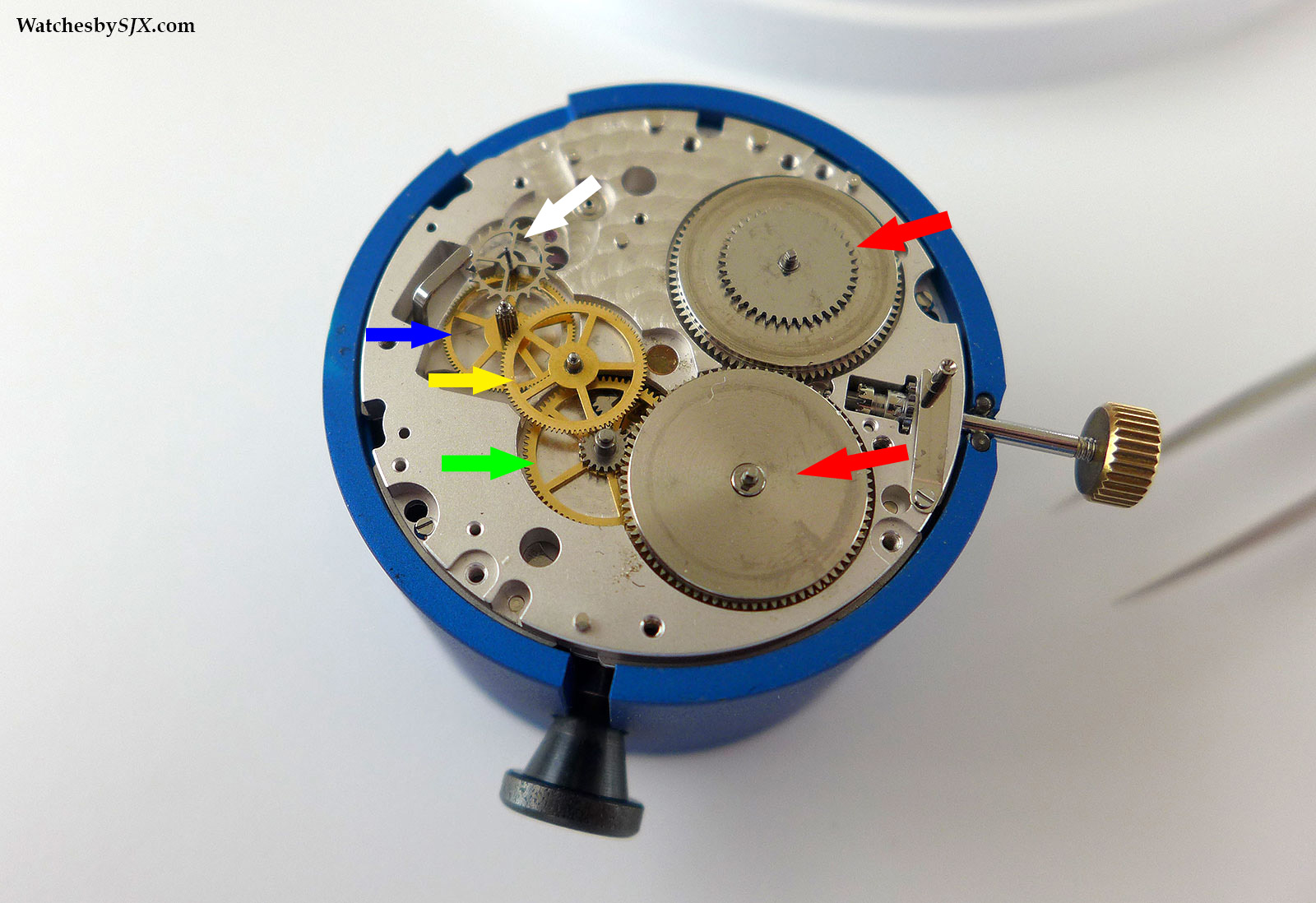
Pulling the crown causes the watch to stop, a hack seconds feature that allows for precise time setting. That’s possible thanks to a lever next to the escape wheel that touches the balance wheel once the crown is pulled.
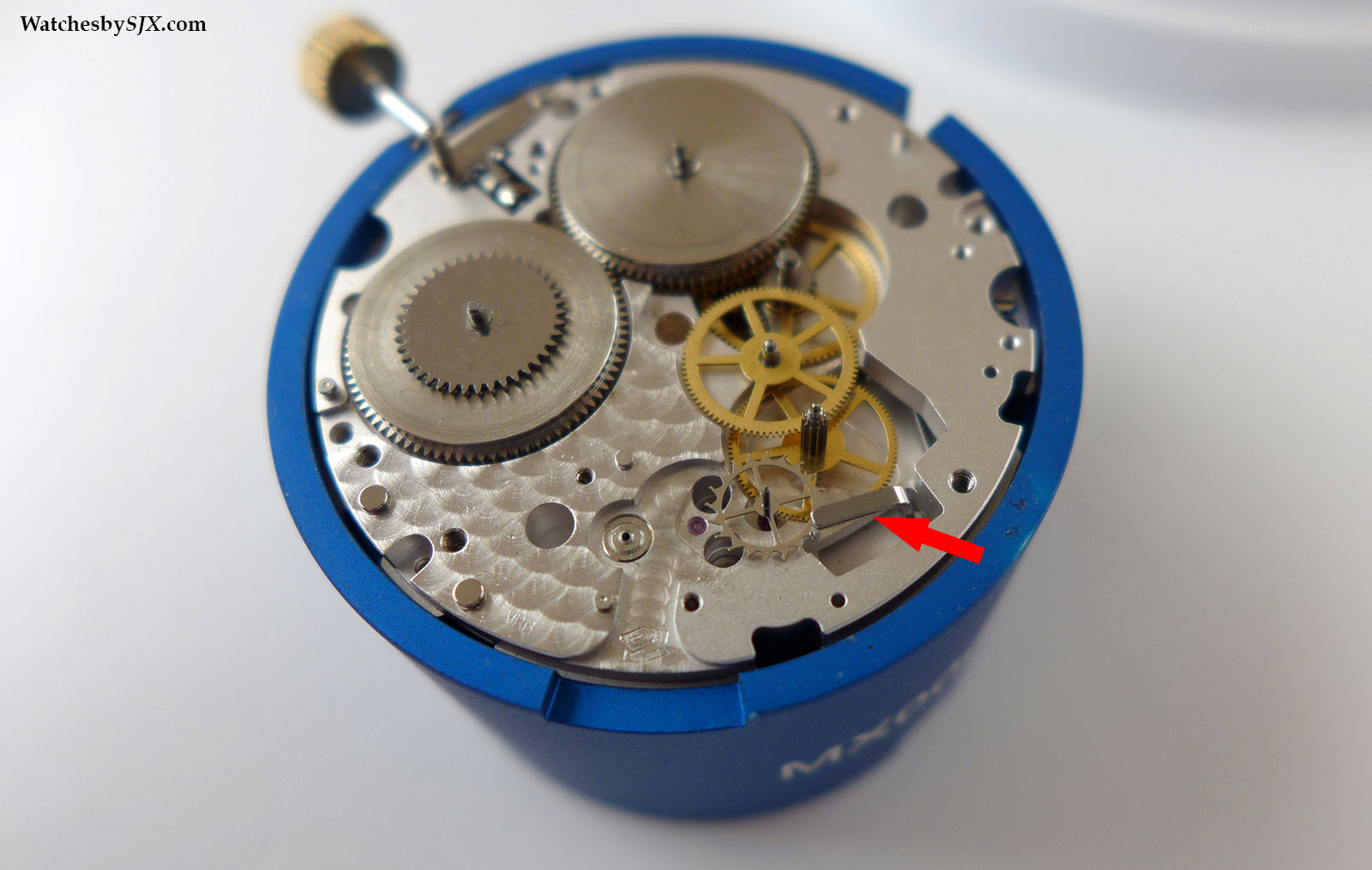
Also visible are the keyless works; their name stems from the fact that pocket watches were originally wound with keys as were clocks before them. These gears engage and disengage when the crown is pulled for winding and setting.
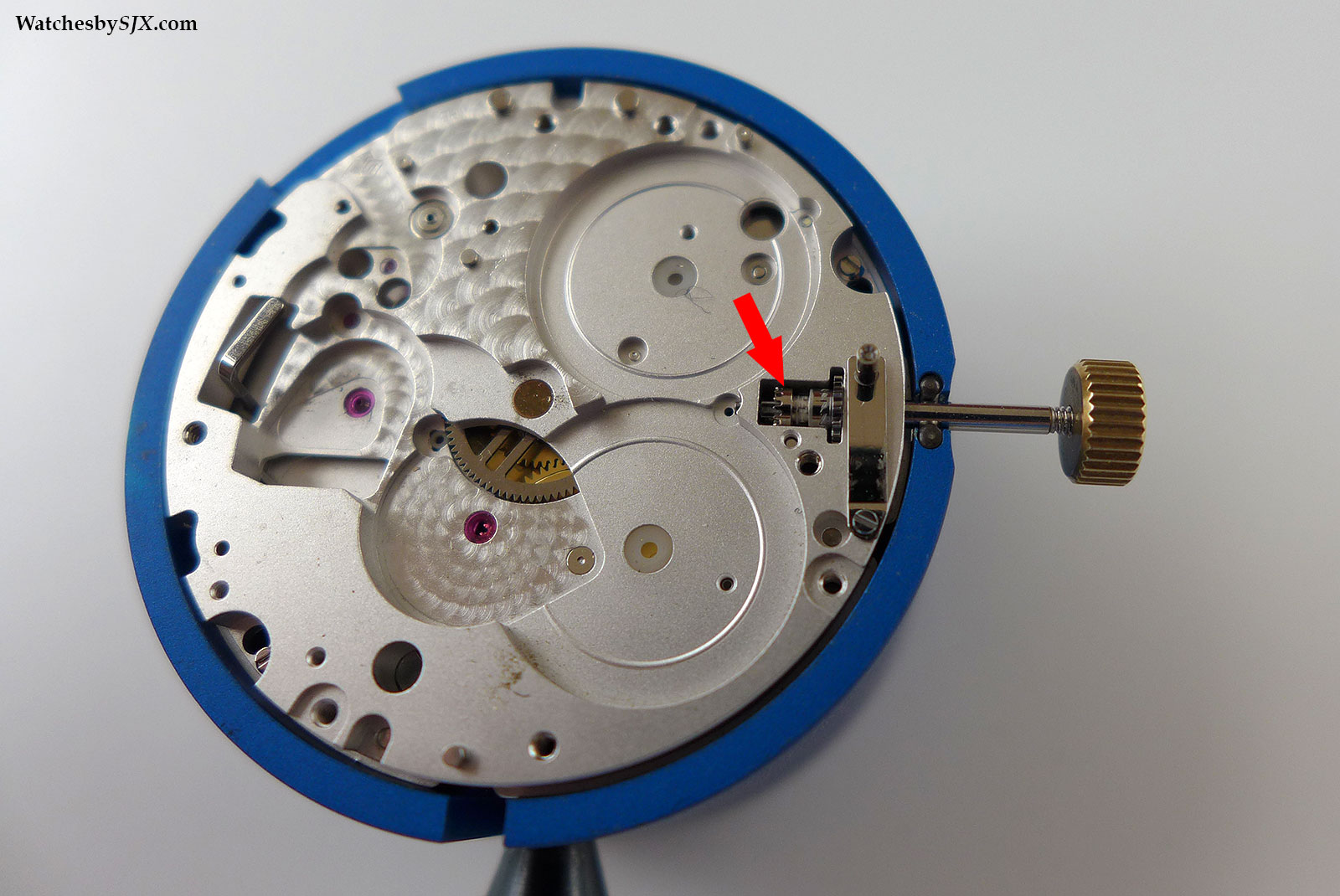
Escapement
Now the base plate is almost bare and the assembly begins. The gear train and barrels are installed, with the escape wheel the most difficult since it is the smallest.
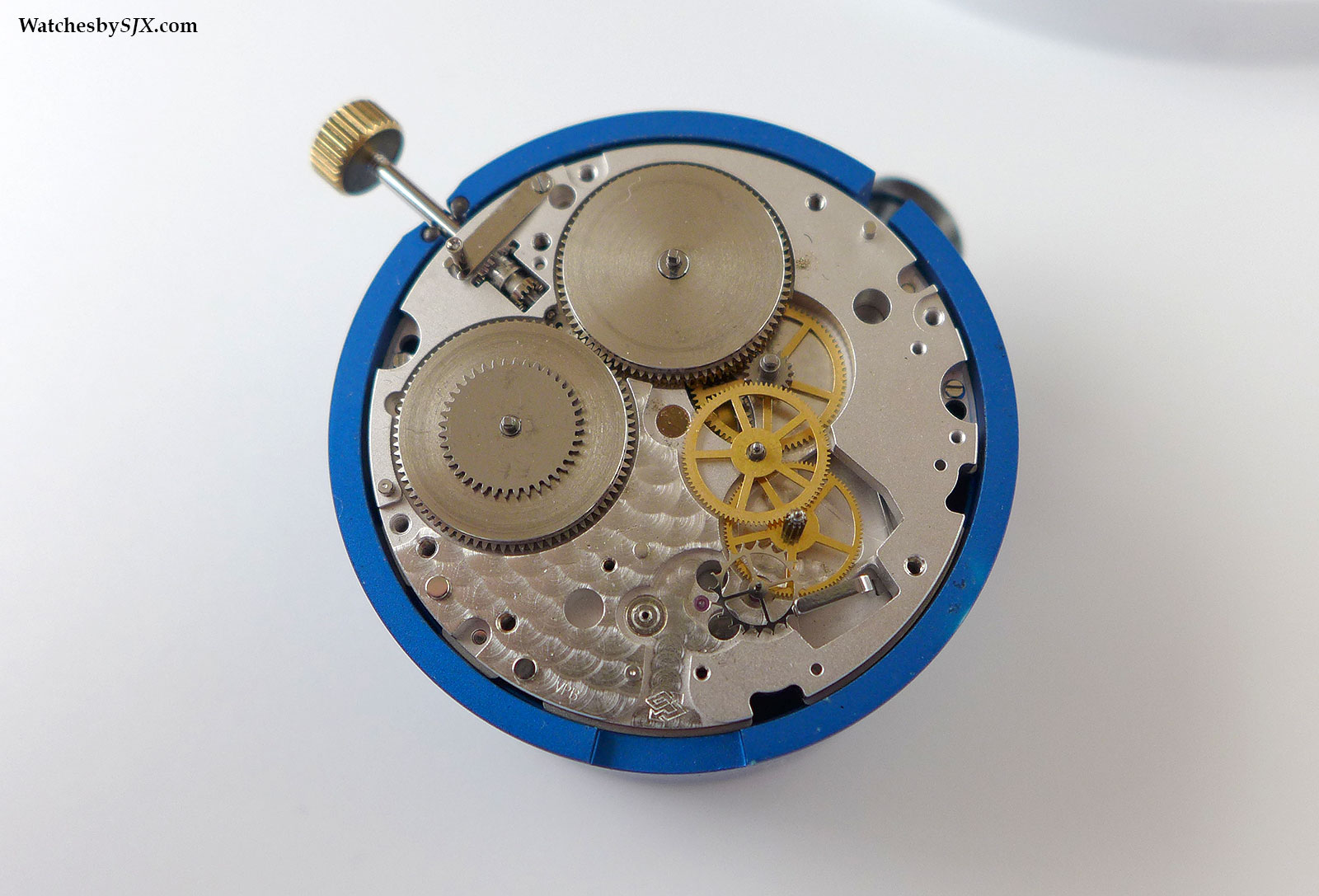
Because the escape wheel pivot is extremely fine, even when it is seated in the jewelled bearing it still wobbles. The three-quarter plate has to sit perfectly, with all the pivots of the barrels and gear train going into the correct bearings, including that of the wobbly escape wheel.
That makes the task of aligning the three-quarter plate tough since the upper pivot of the escape wheel has to sit inside a jewelled bearing on the three-quarter plate.
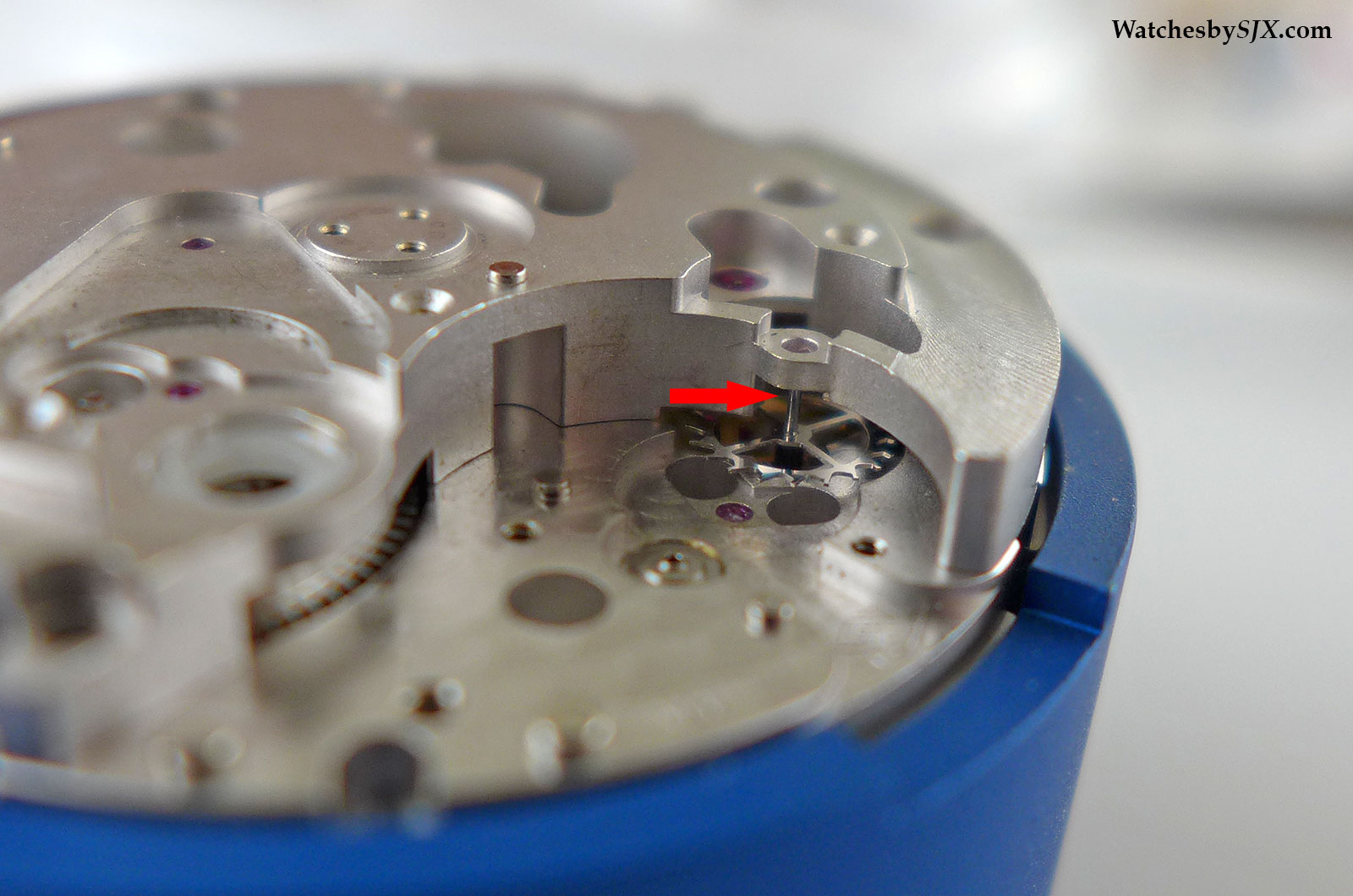
If properly assembled, winding the movement will cause the gear train and escape wheel to turn speedily, proof that the movement is correctly assembled so far.
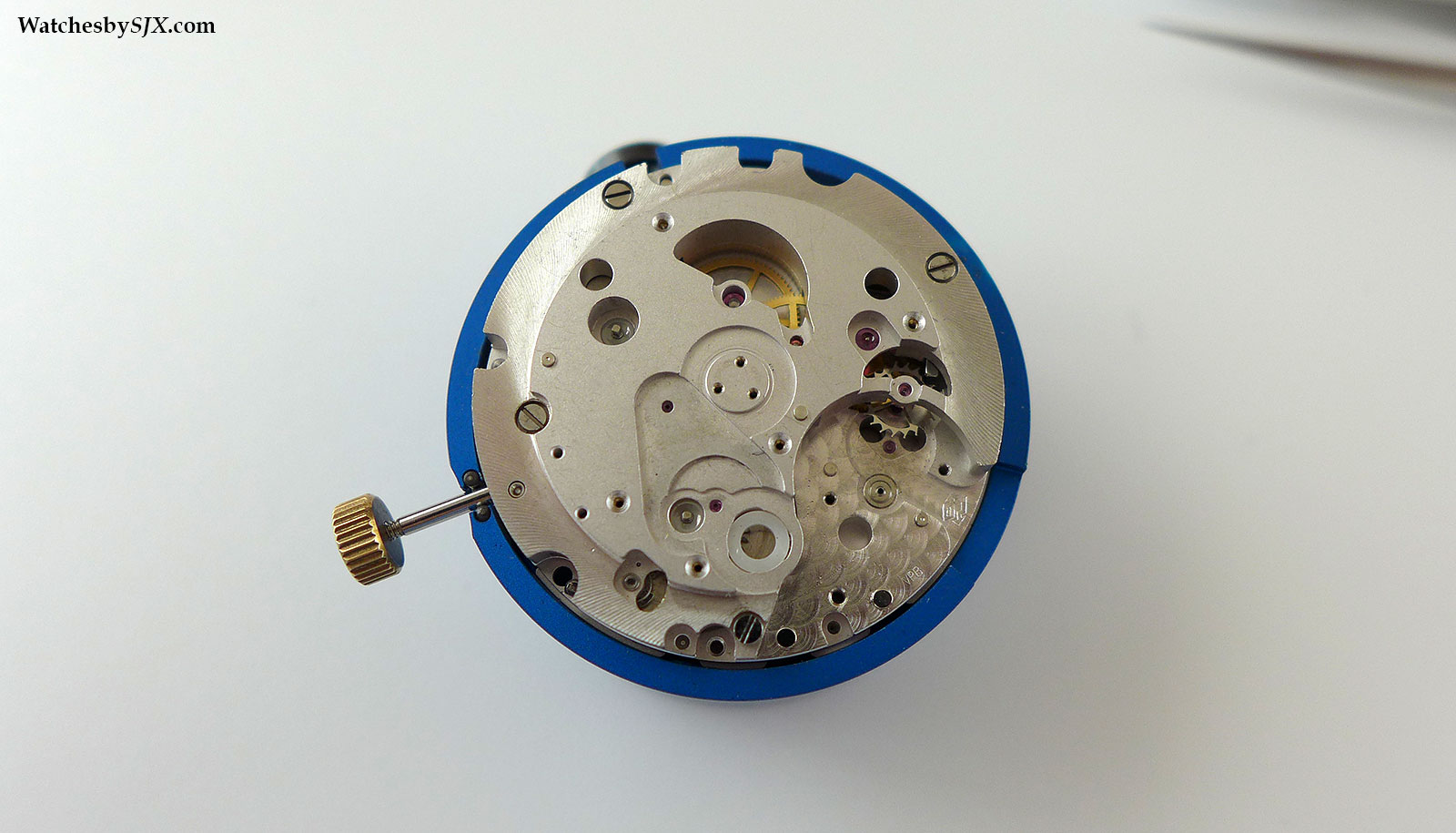
Next the pallet fork goes in. Like the escape wheel the pallet fork has a tiny pivot, so even when correctly fitted it has play. Setting it correctly and securing the pallet fork bridge over it is a delicate task.
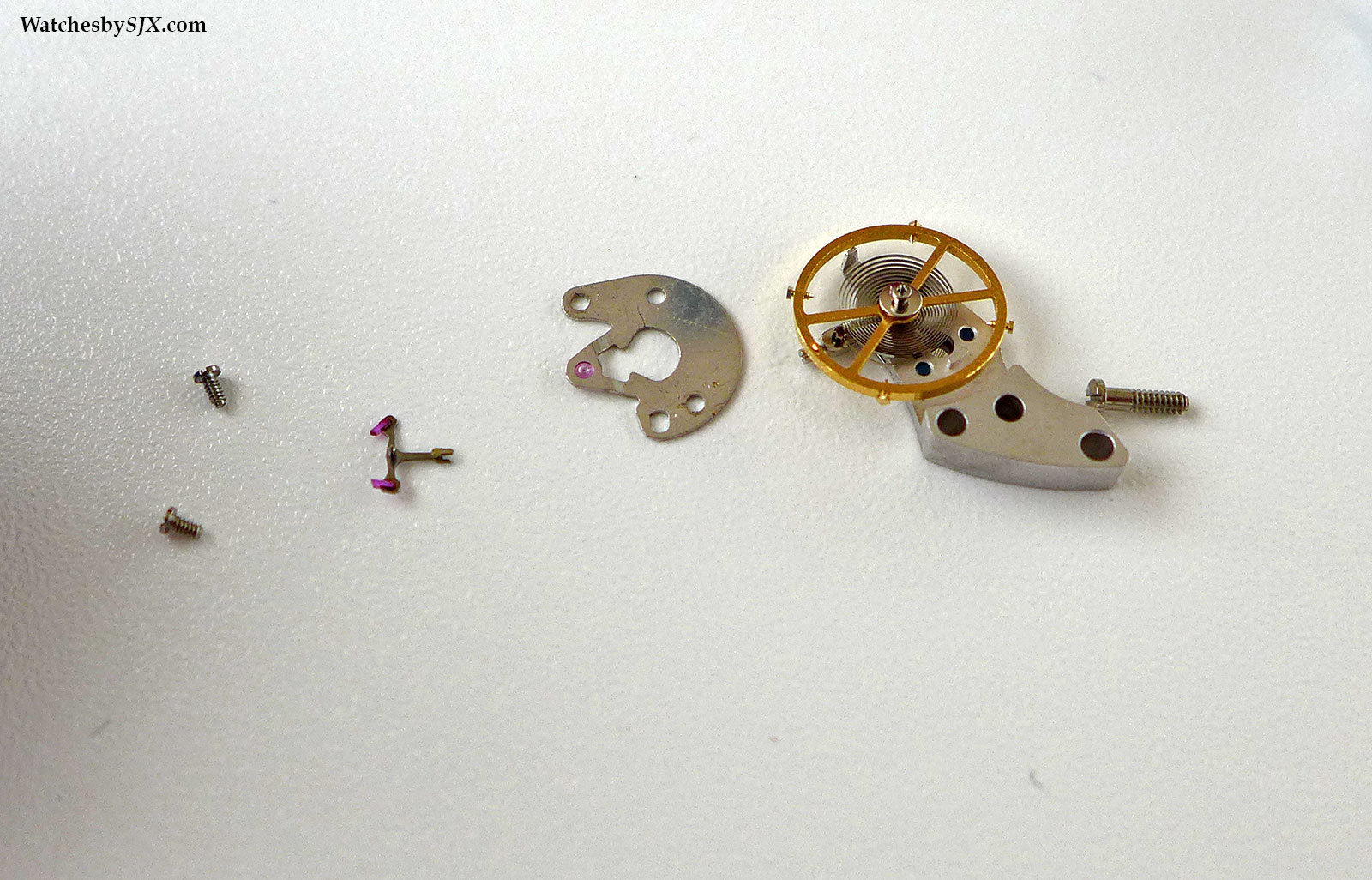
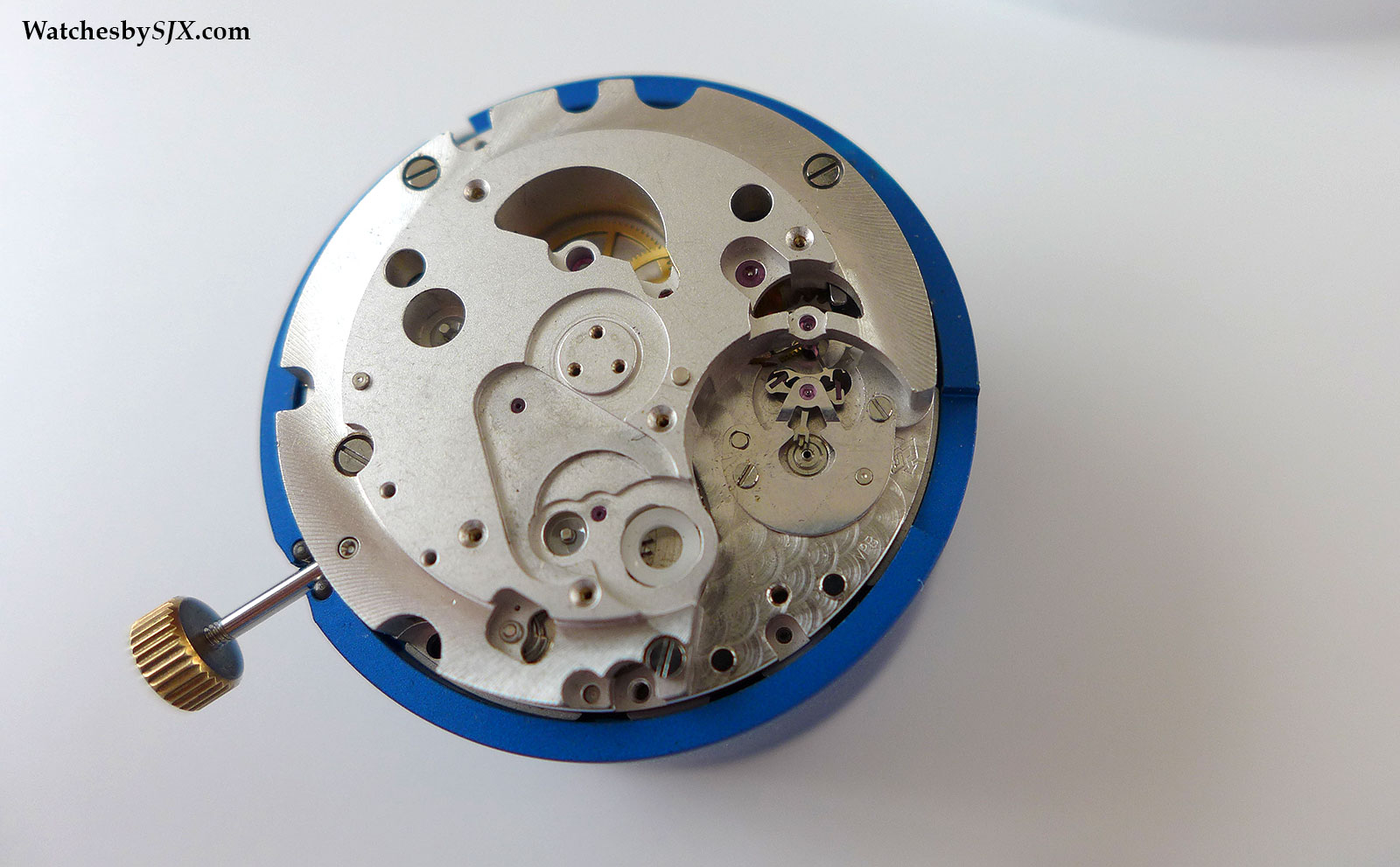 |
| The pallet fork and pallet fork bridge installed |
Then comes the most difficult step in assembly, putting in the balance wheel. The pivot of the balance staff needs to go into a tiny little bearing, and because the balance is dangling from the balance cock via the hairspring, exact placement is a challenge. A bit of tapping the movement holder usually does the trick.
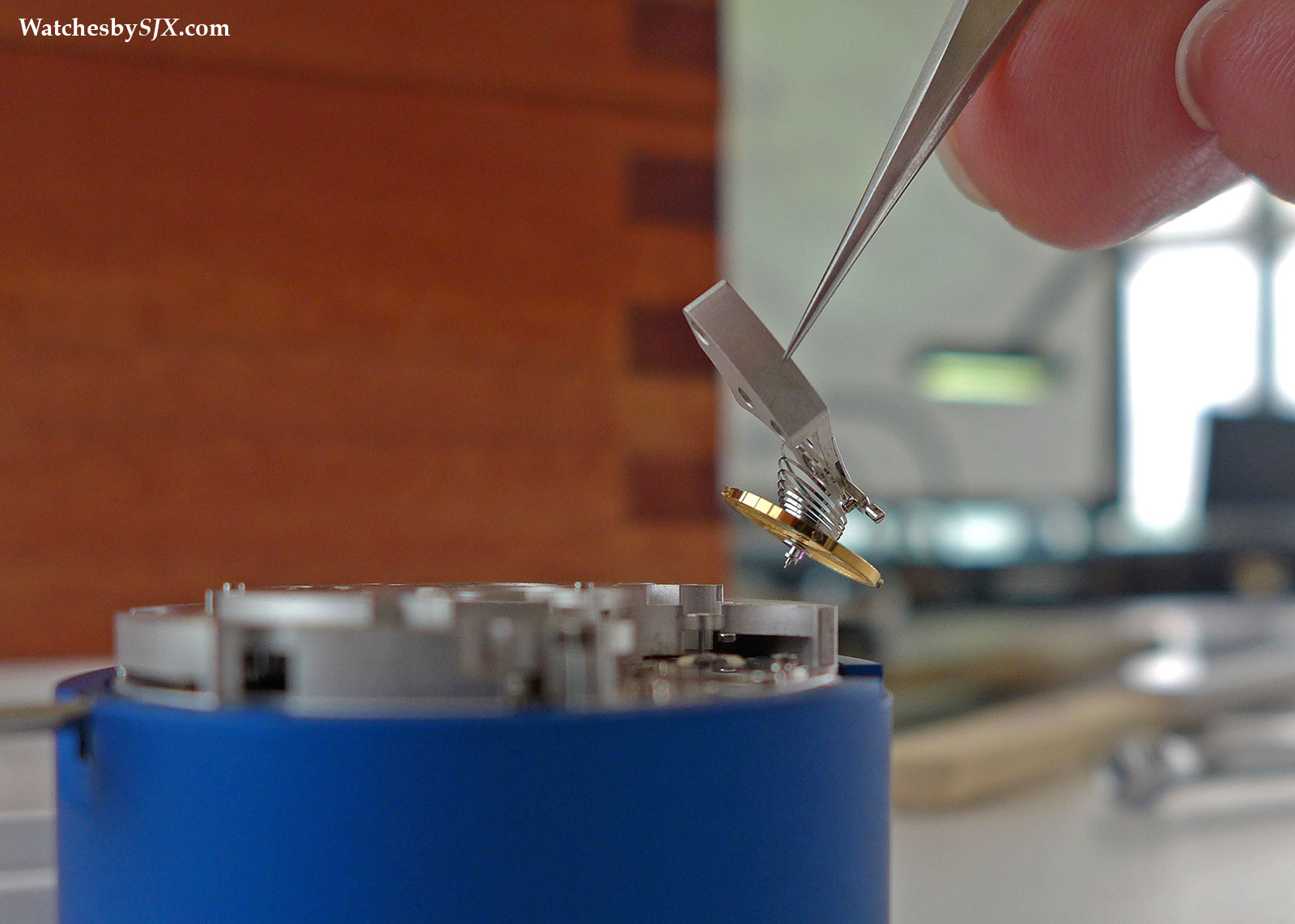
As it is now, the movement is a perfectly functioning manual wind movement. The winding mechanism is needed to complete it.
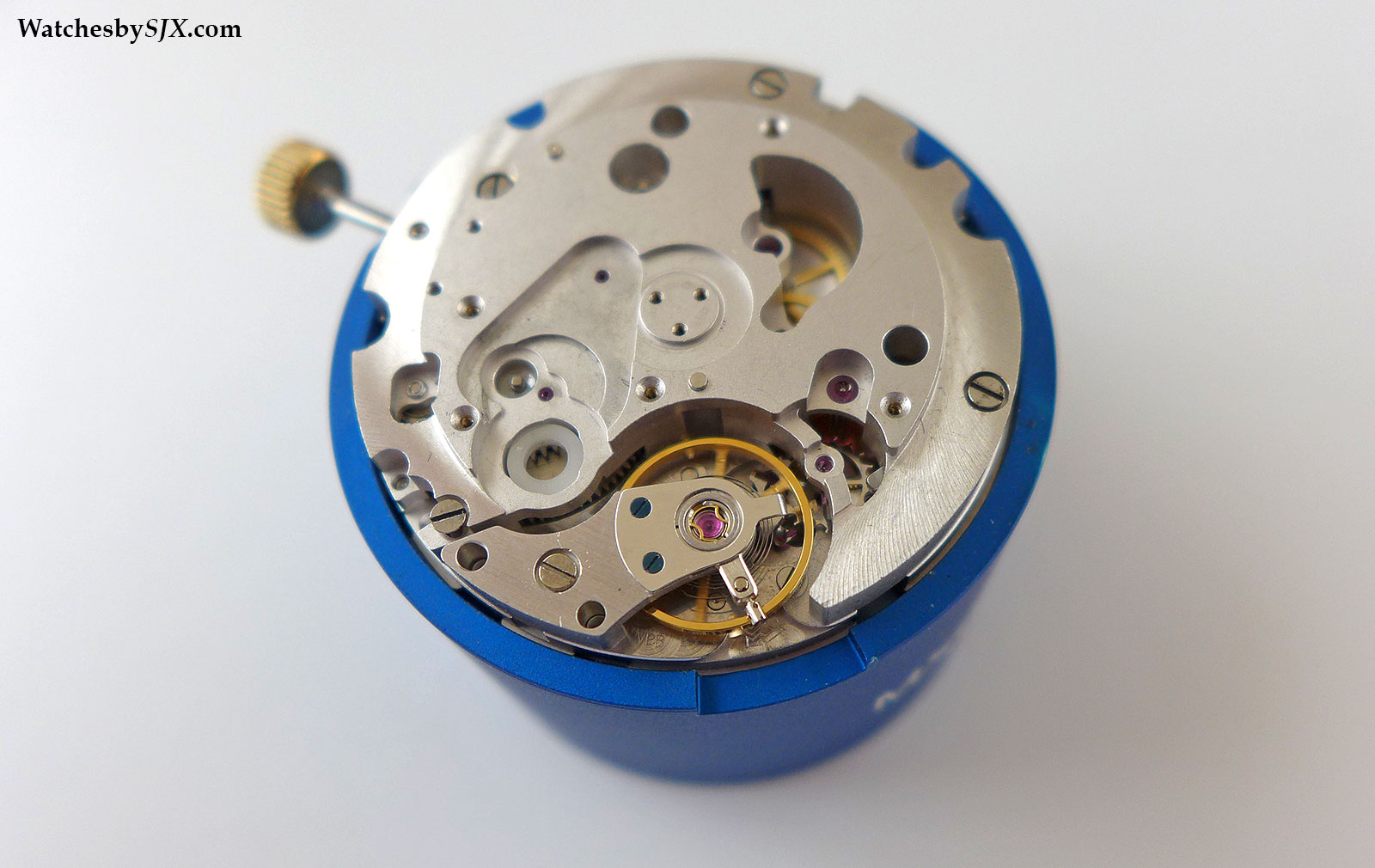
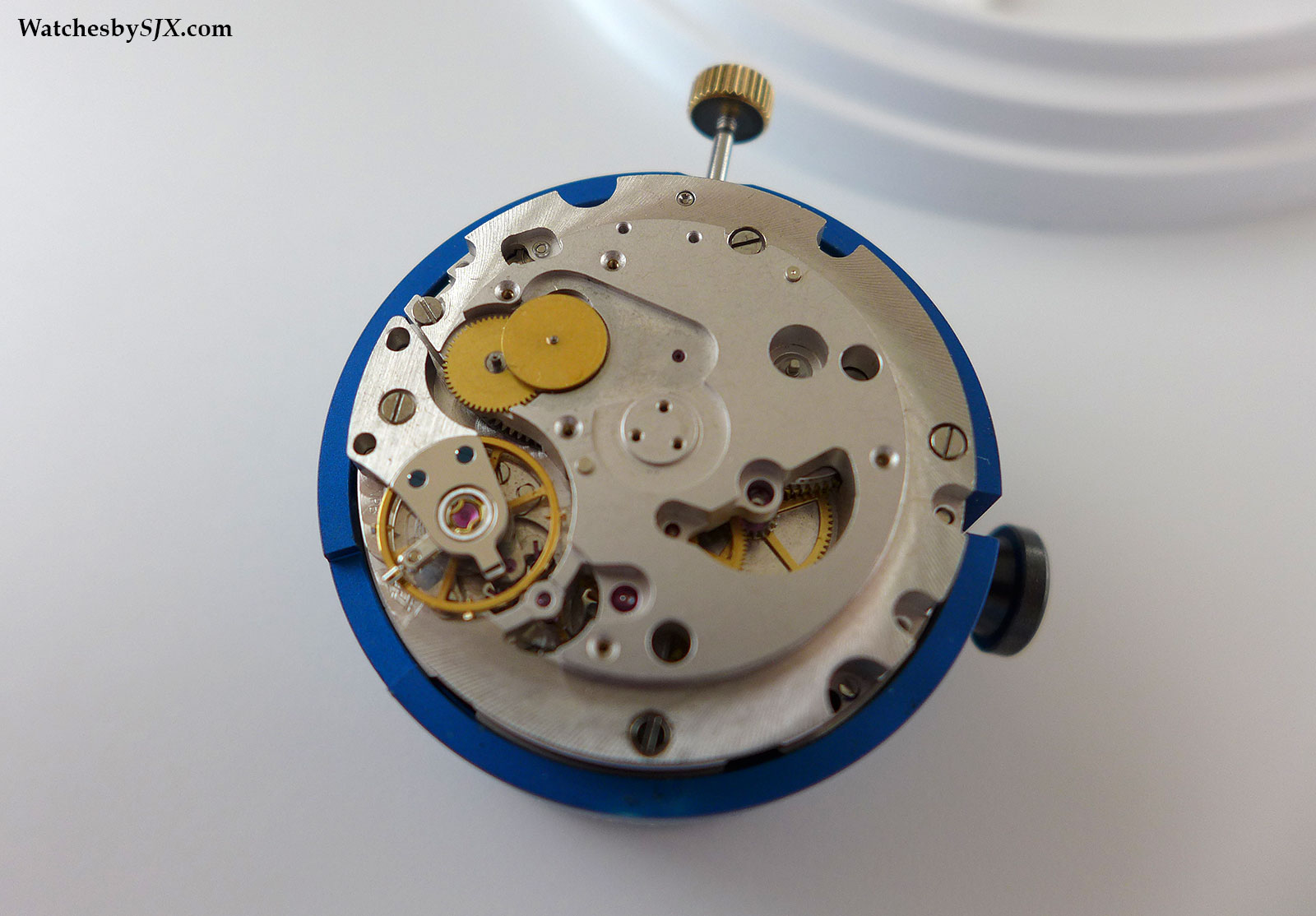
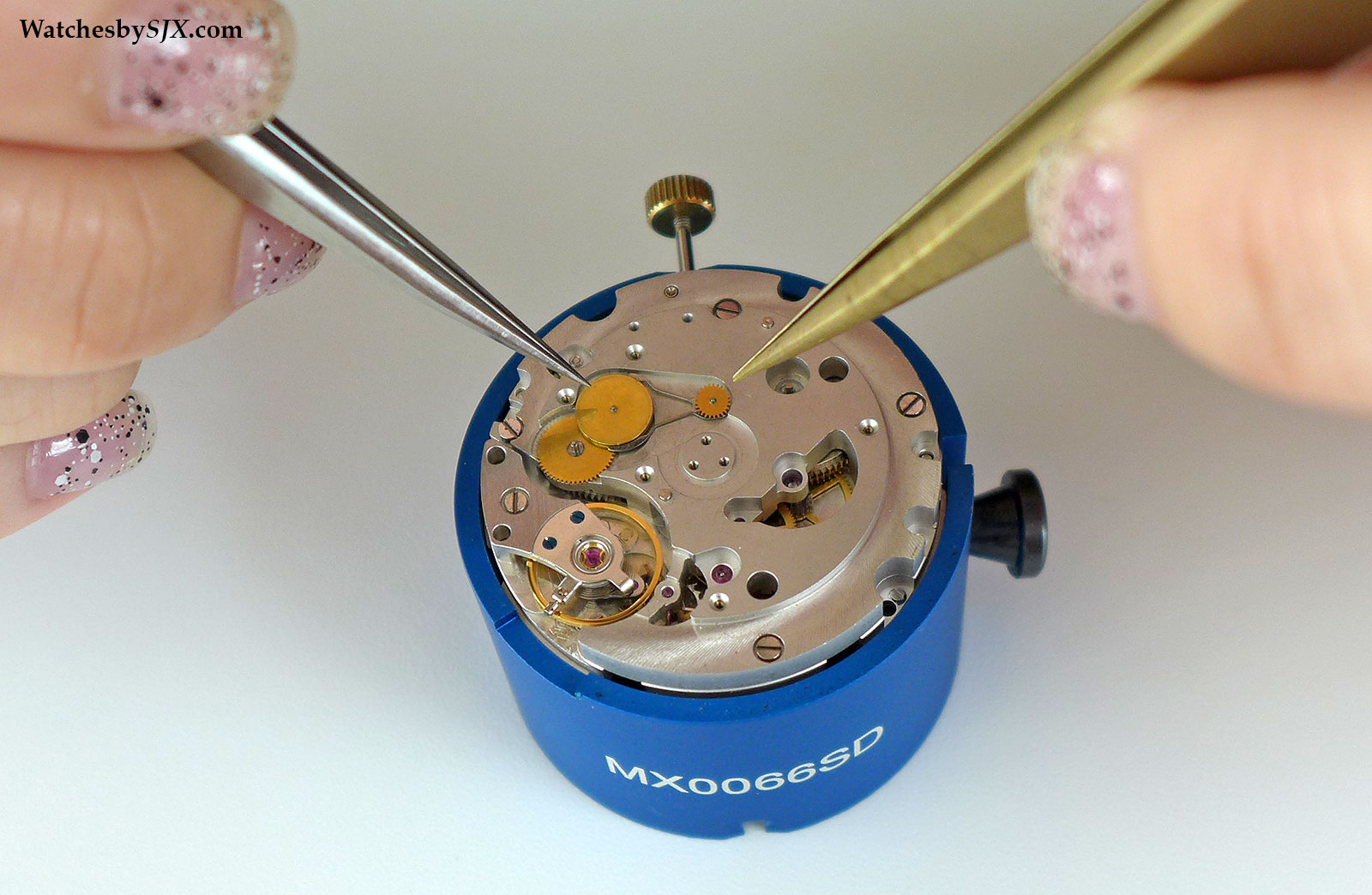 |
| Putting in the Magic Lever mechanism |
And with that, the movement is complete.
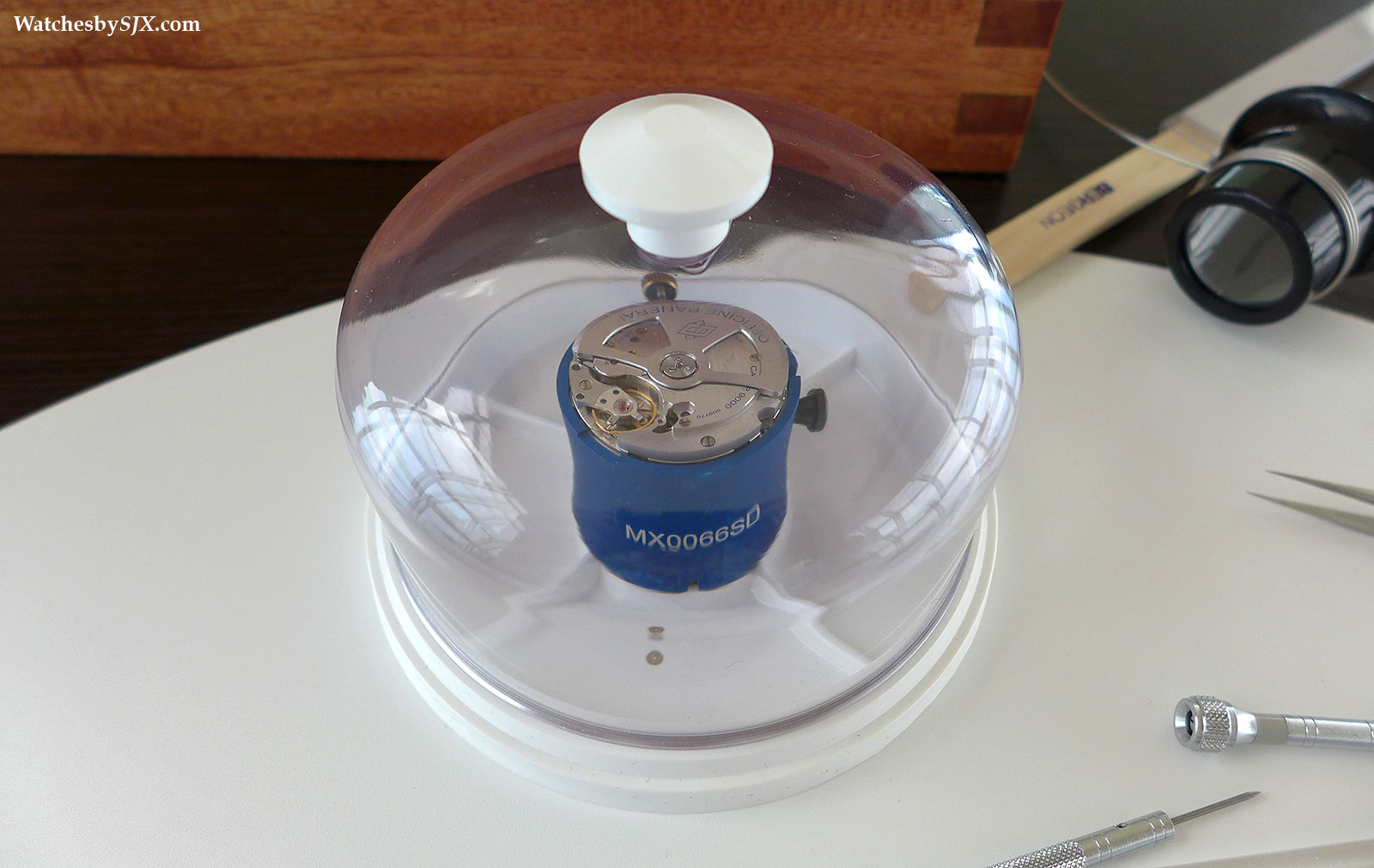
A steady pair of hands are the most desirable skill when putting together a movement. A minor slip can cause the screwdriver head to slip and scratch the movement. Even gripping a pair of tweezers too tightly can cause a screw to fly out and disappear.
Even though the P.9000 is a relatively basic movement it still requires careful and patient work, even for a professional.
Back to top.
